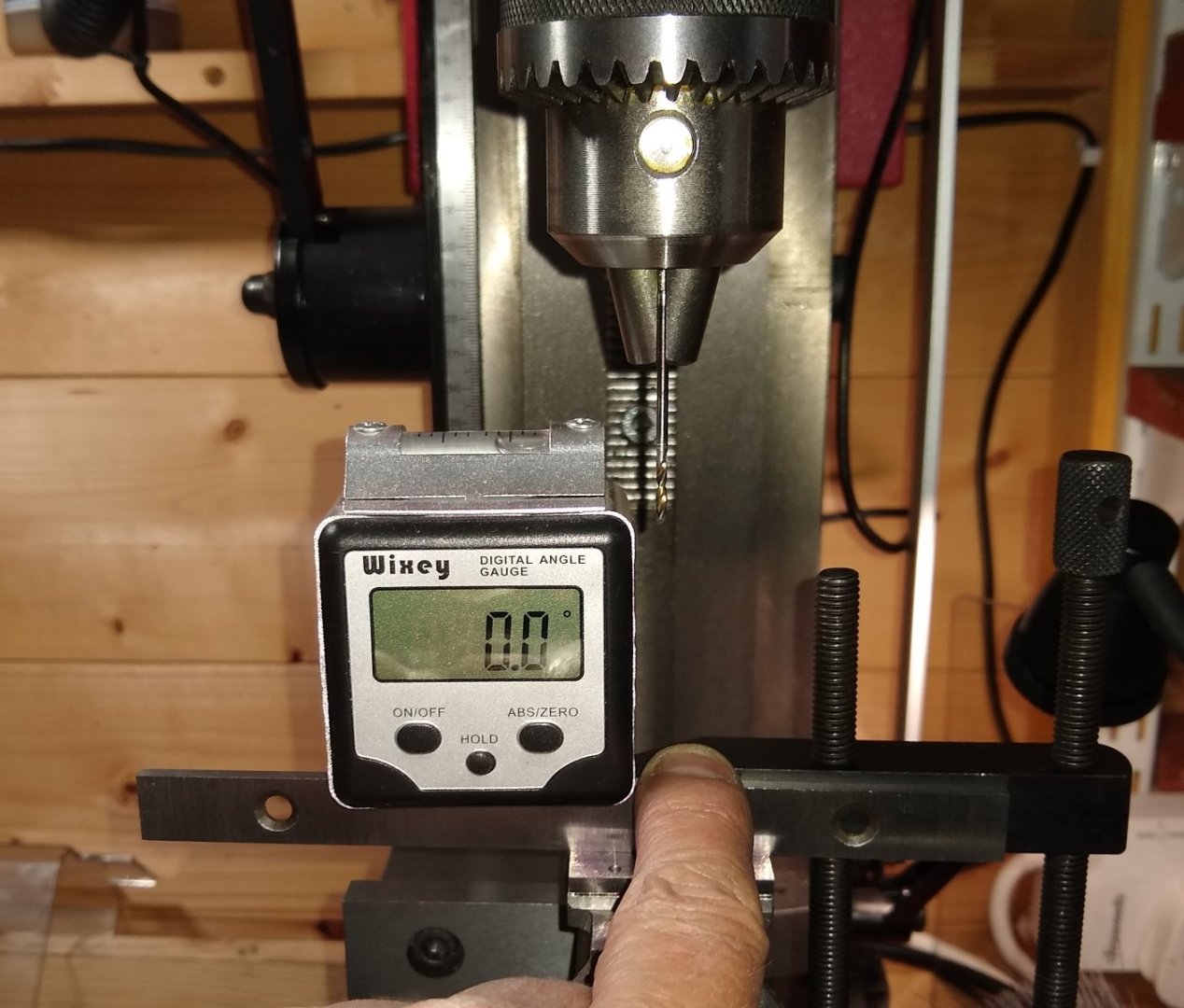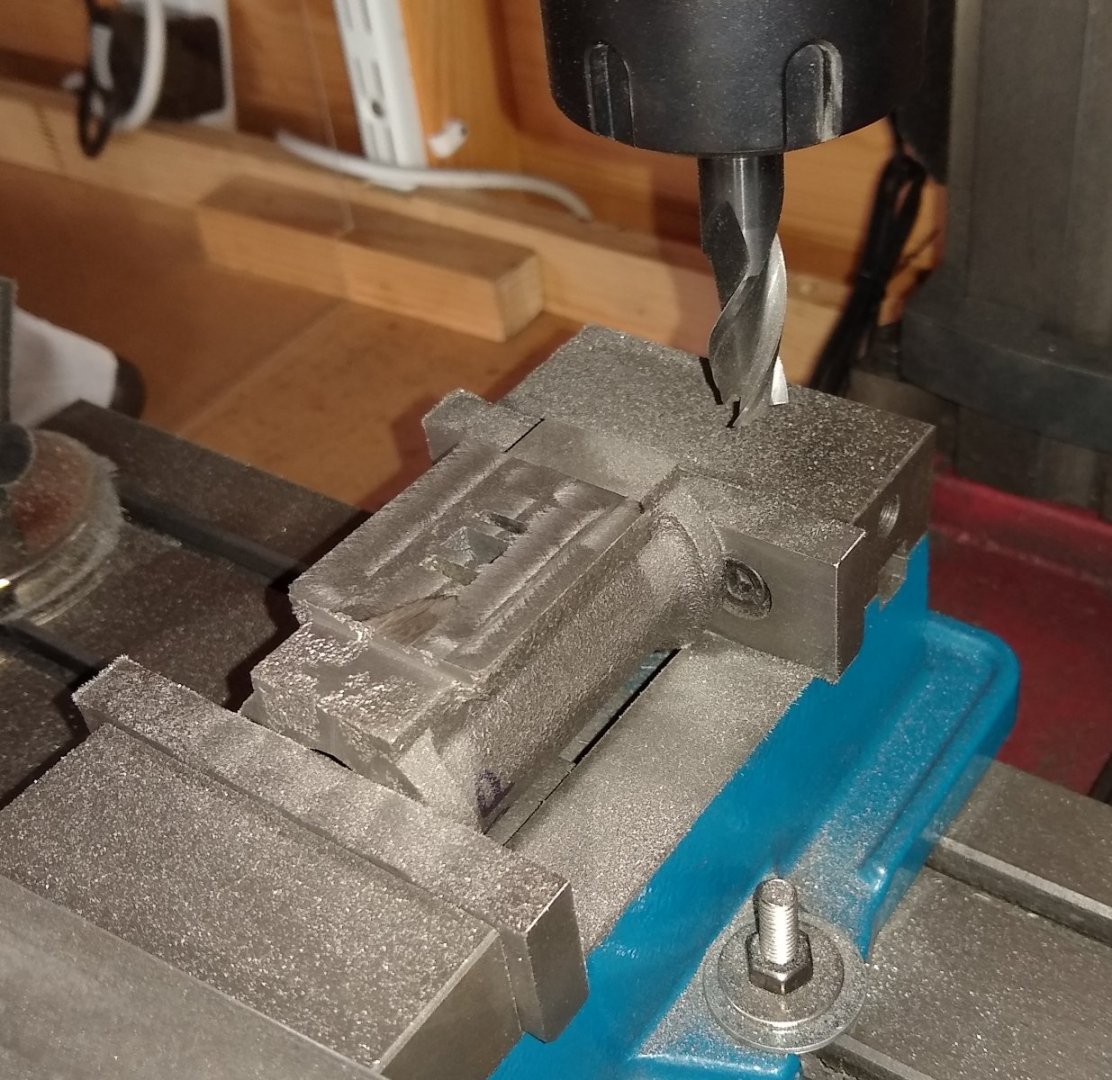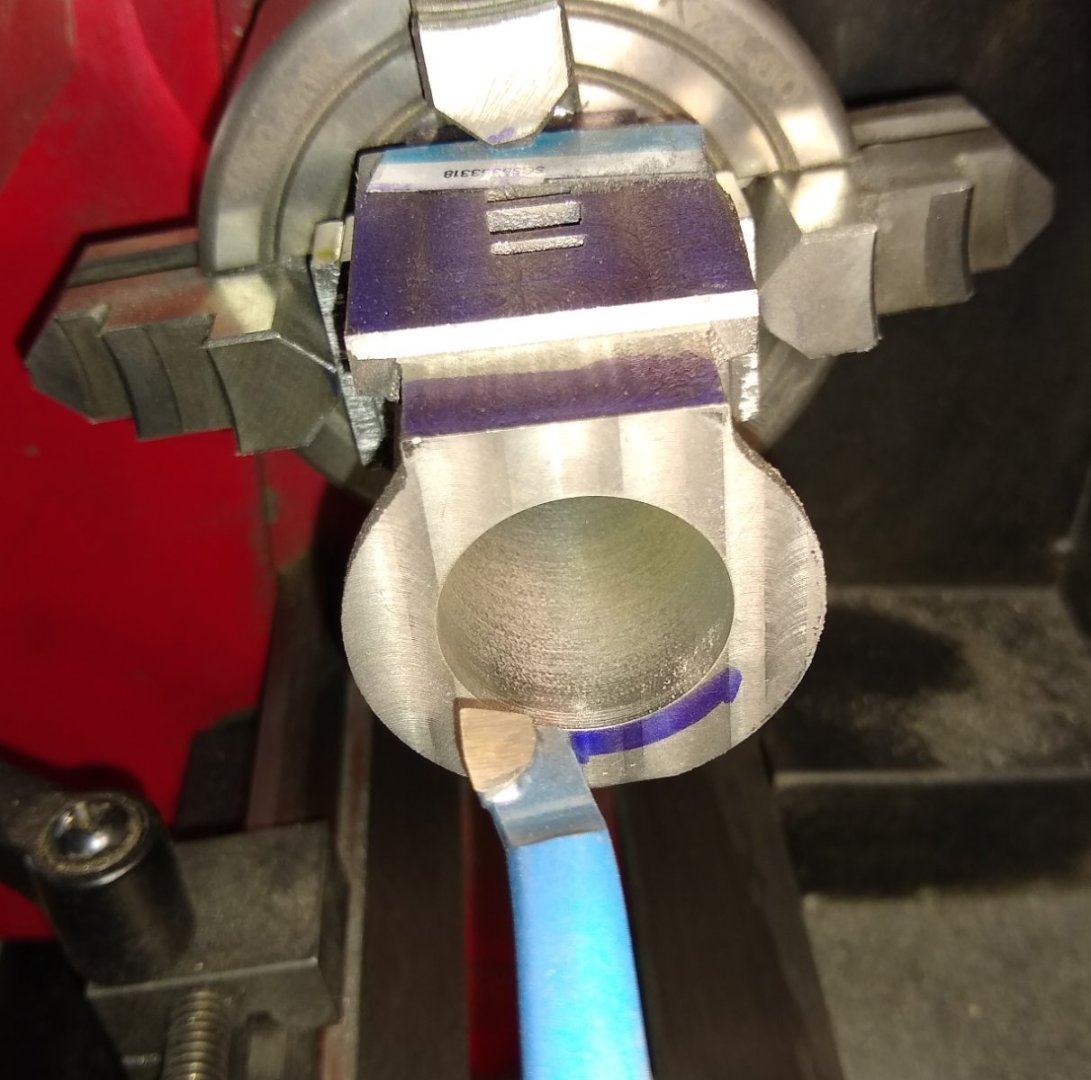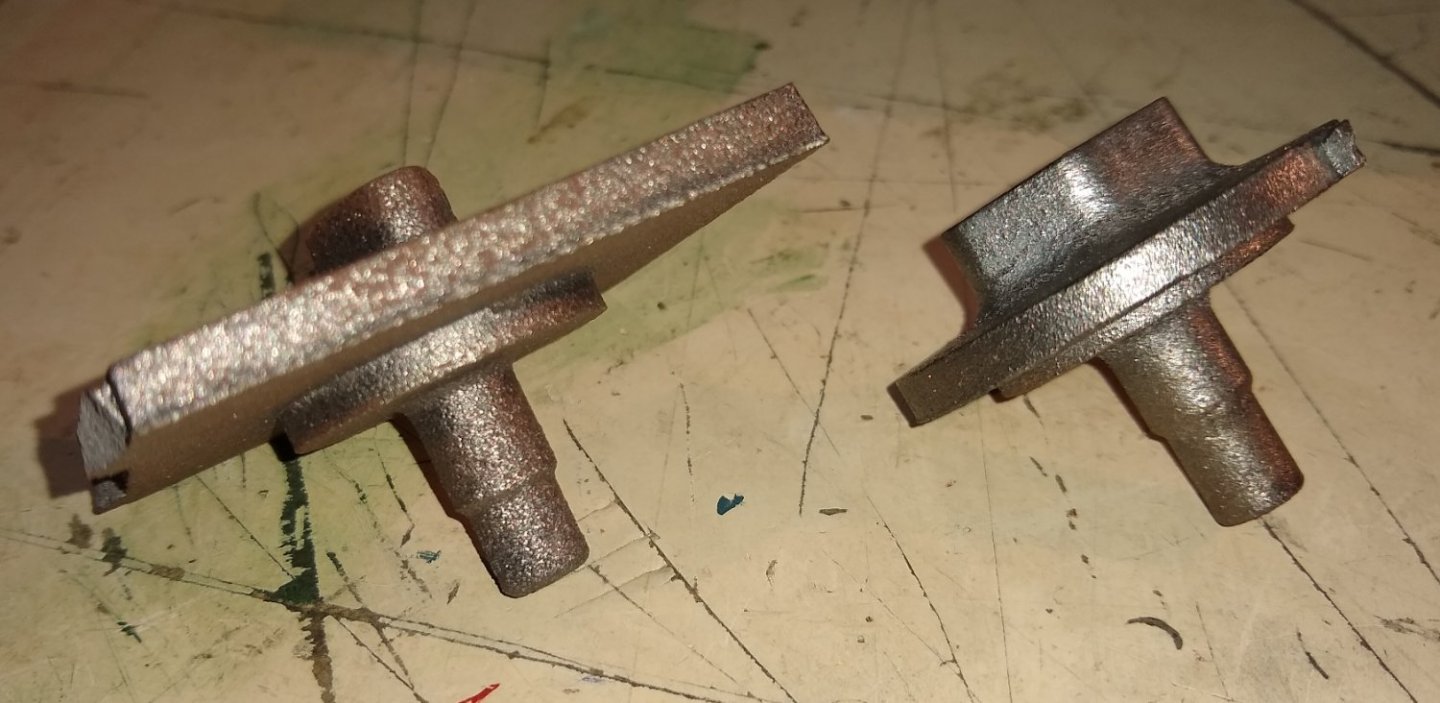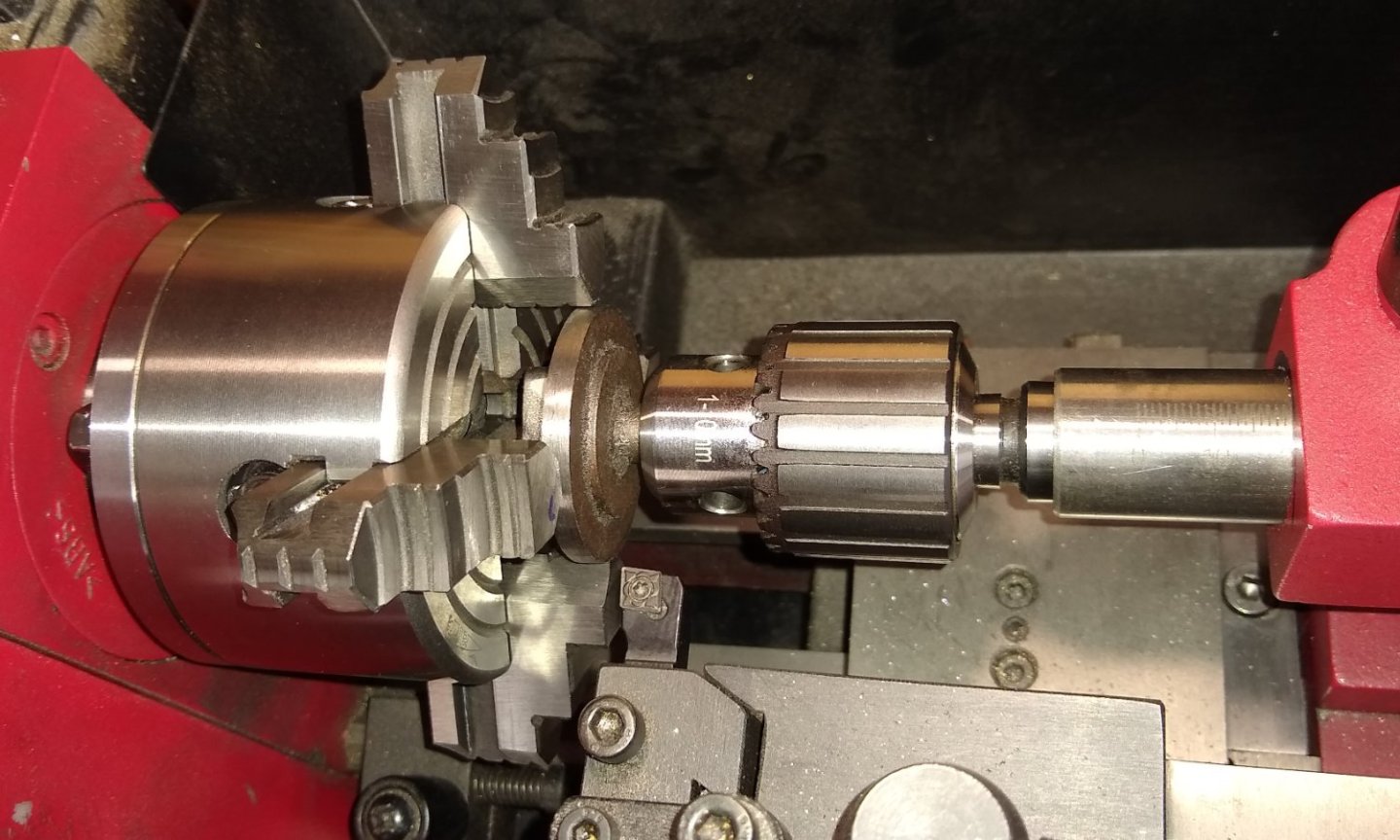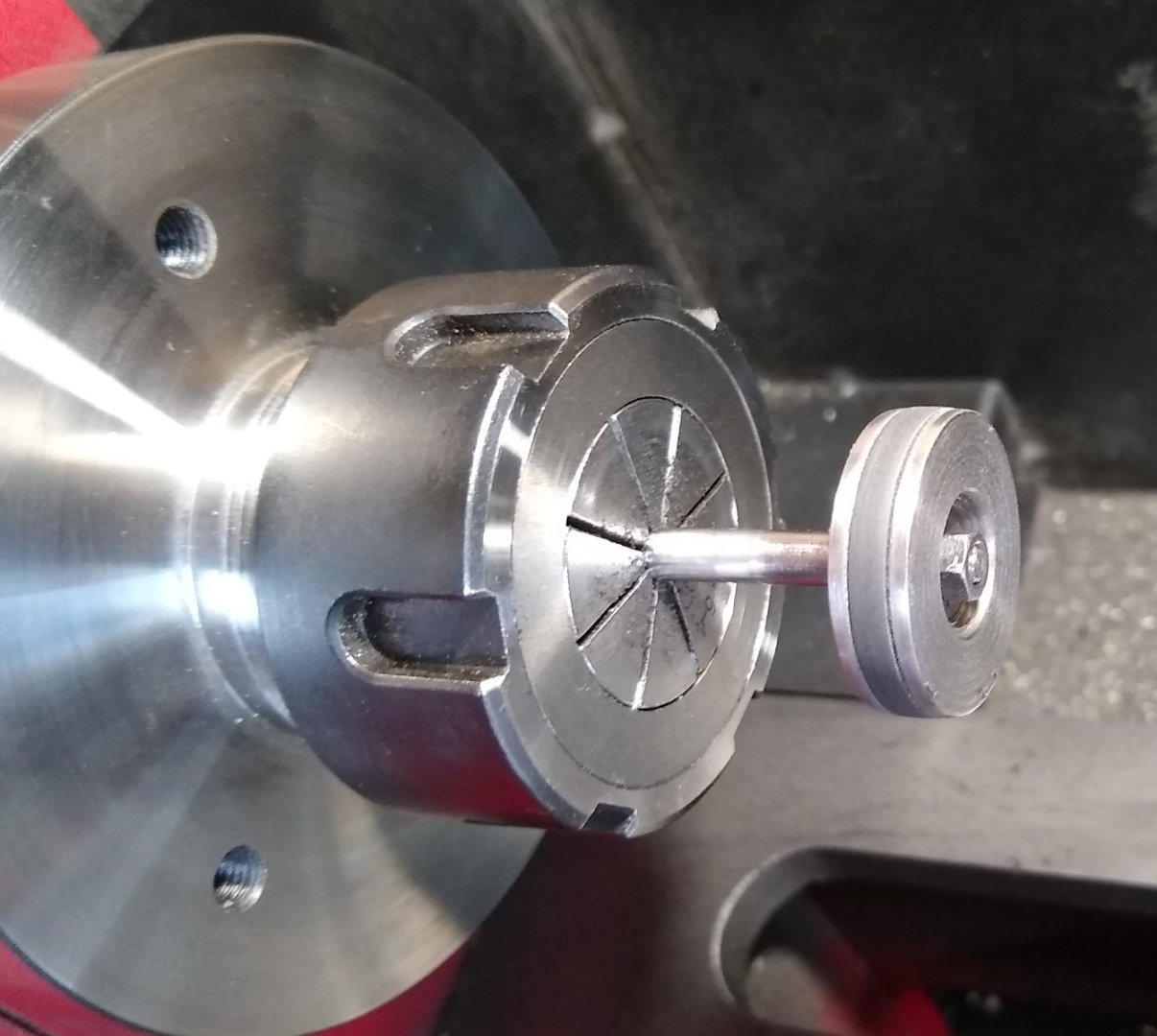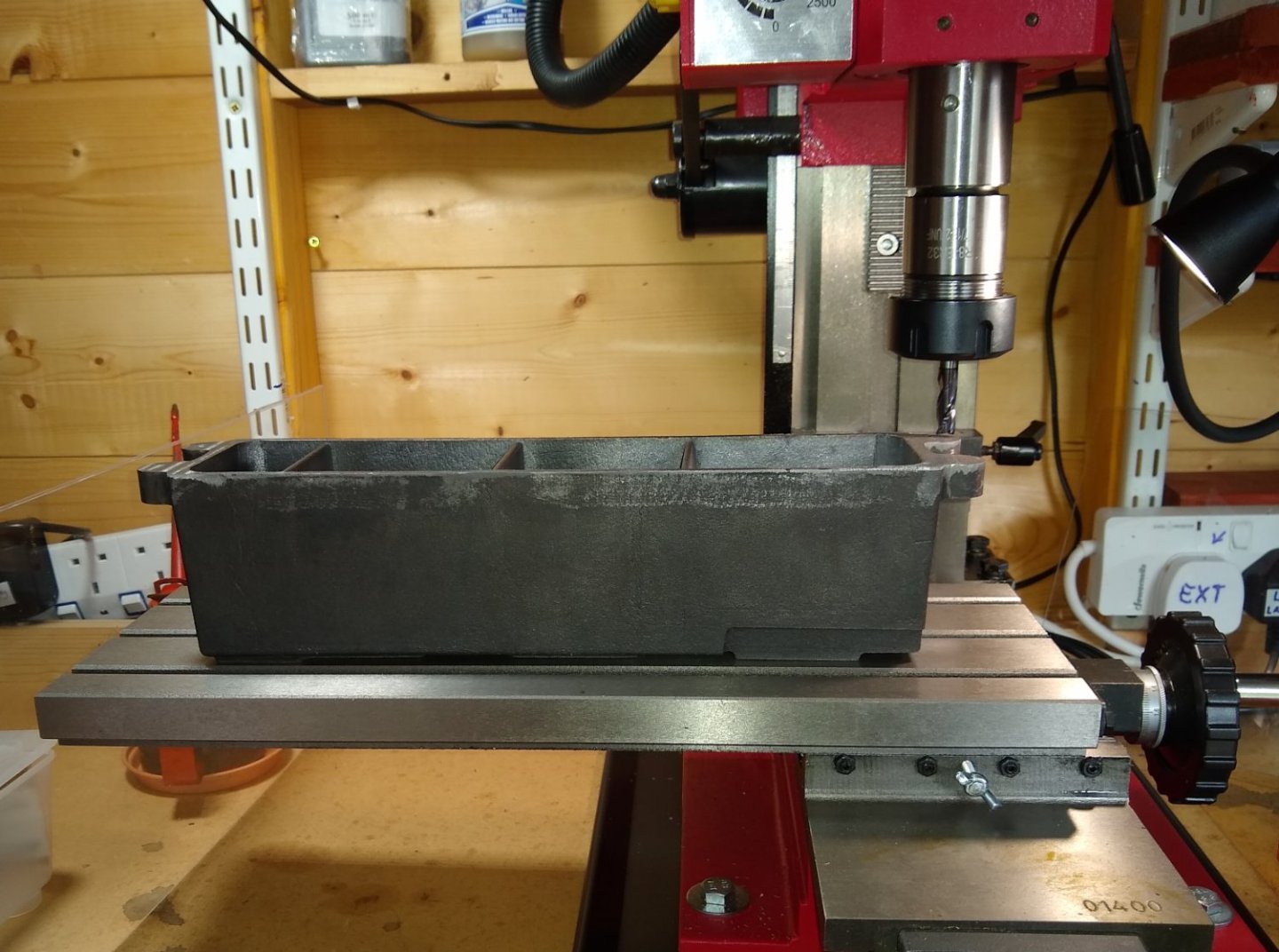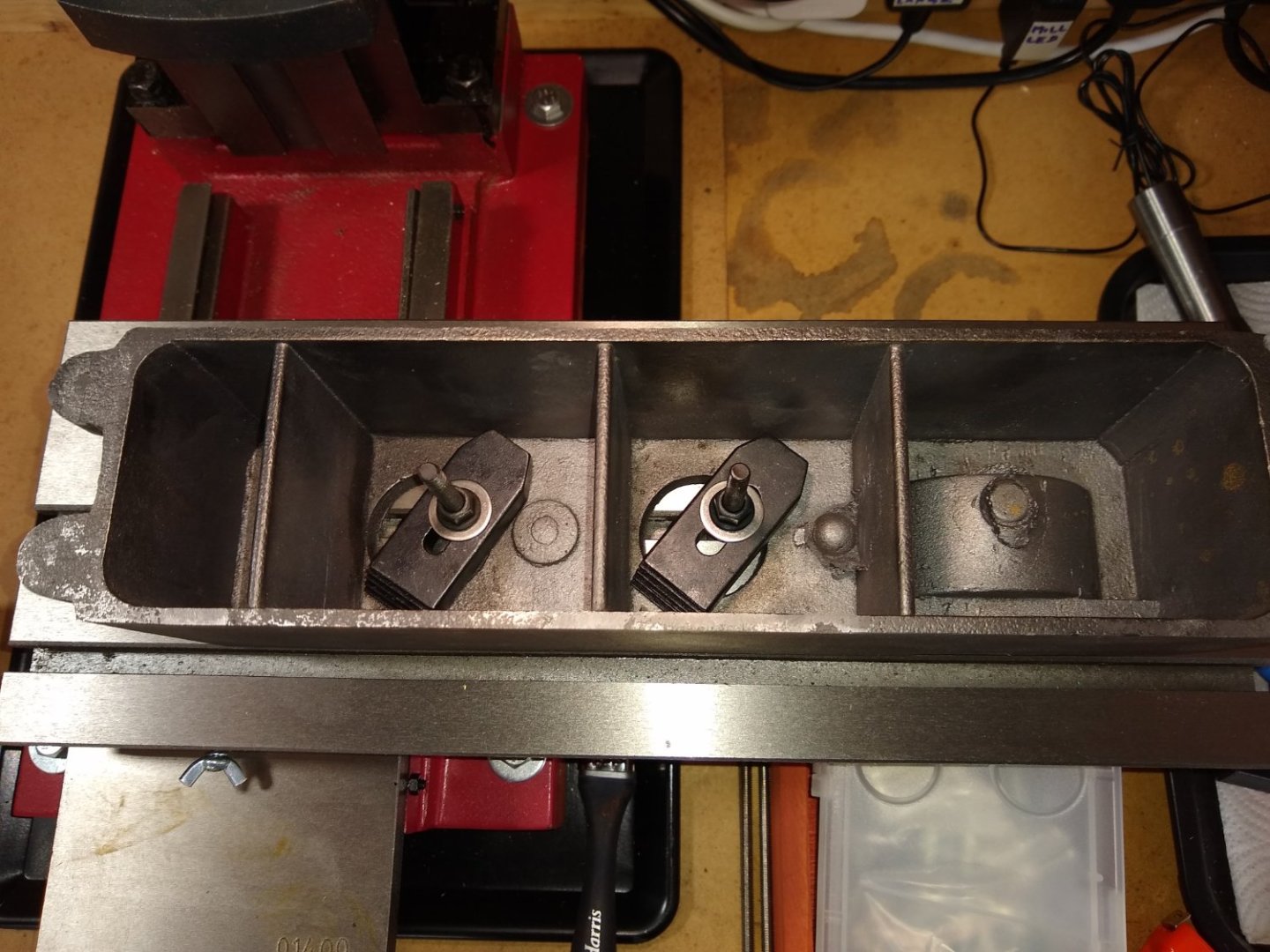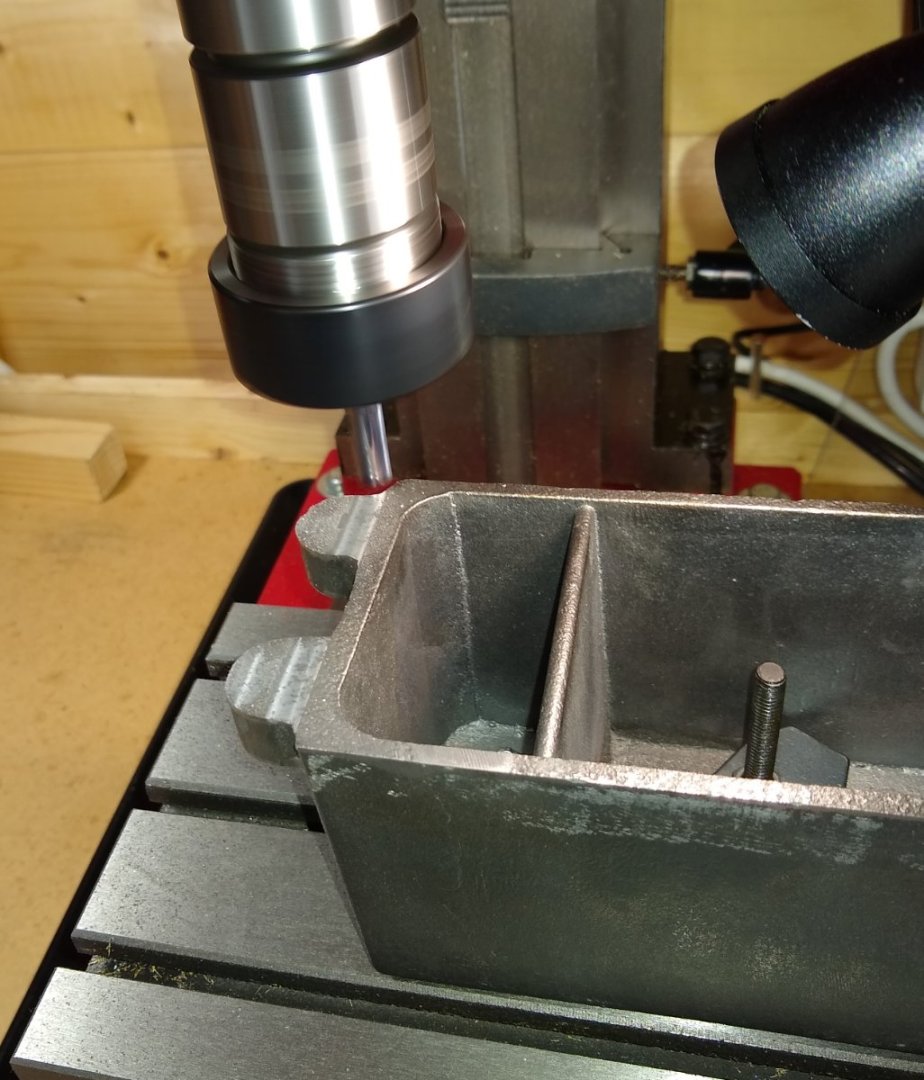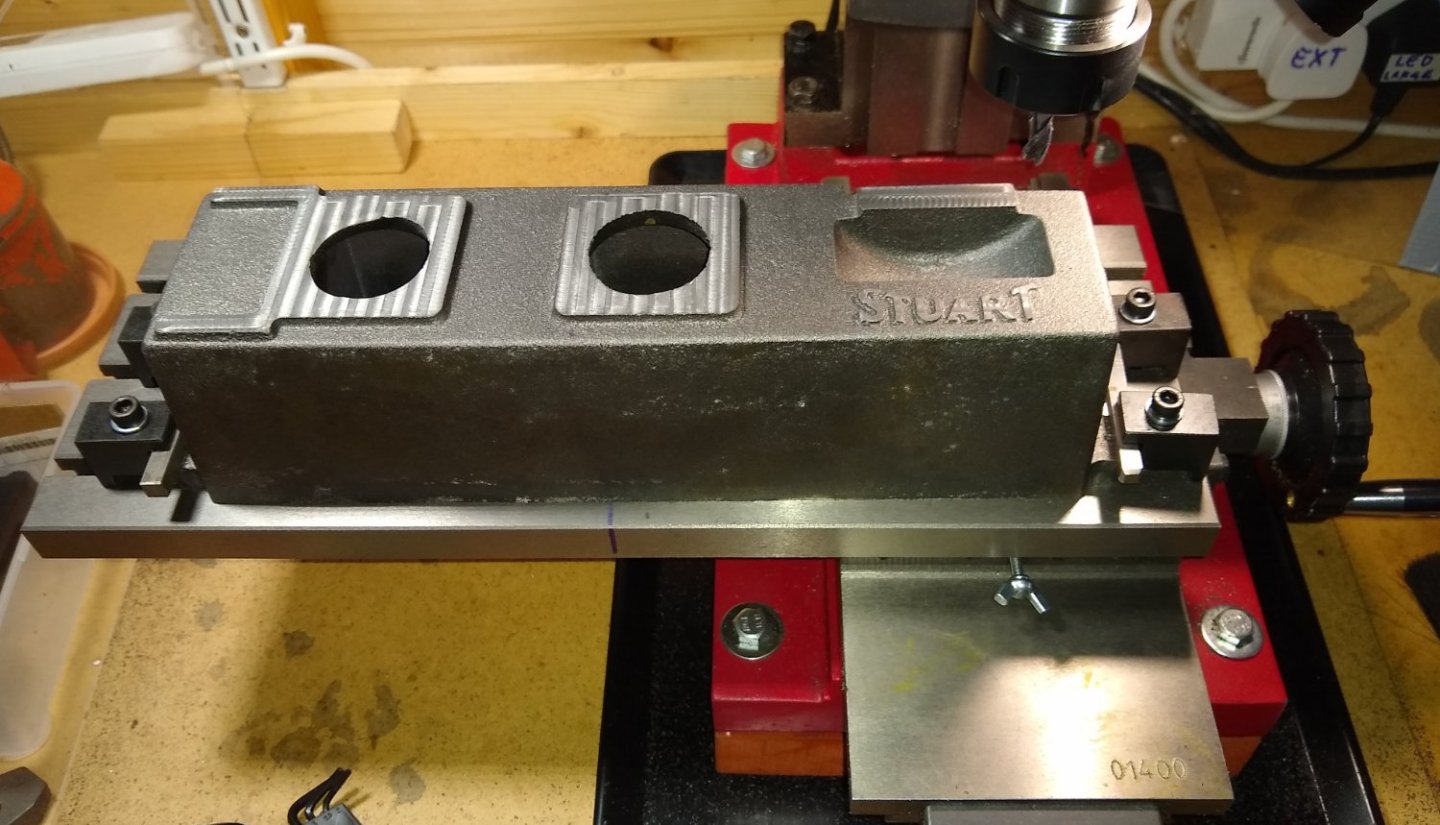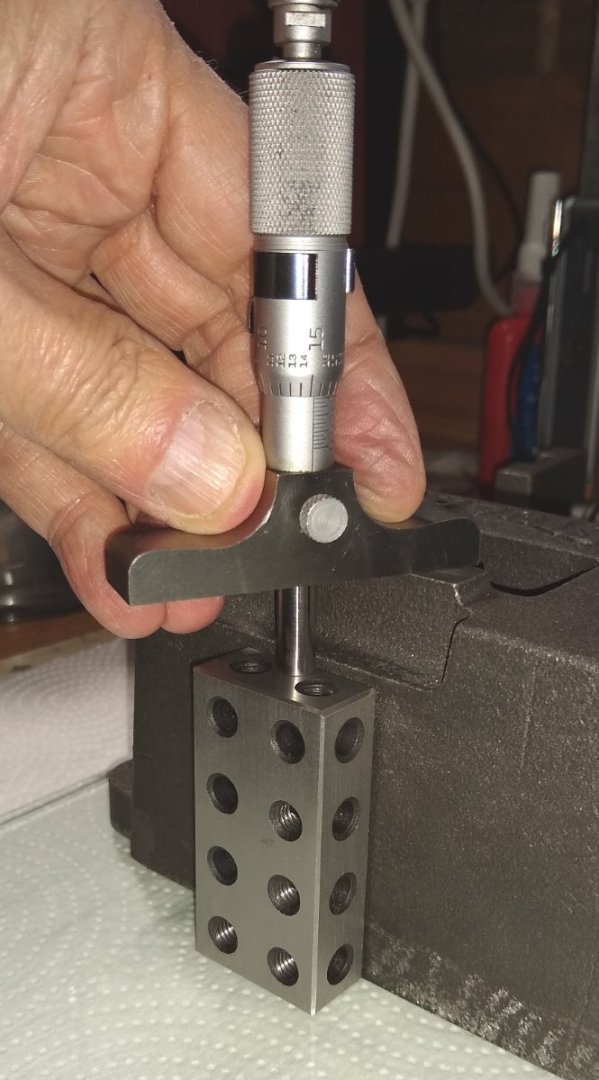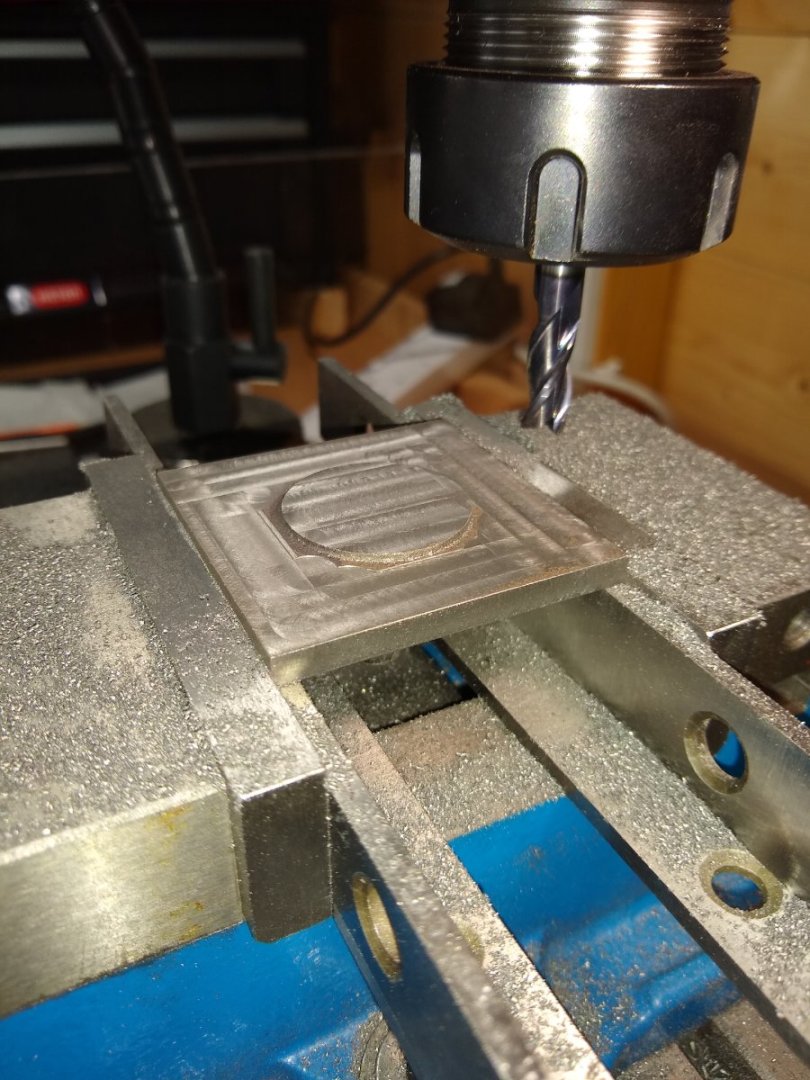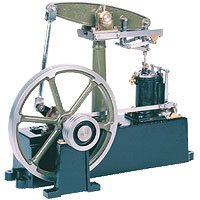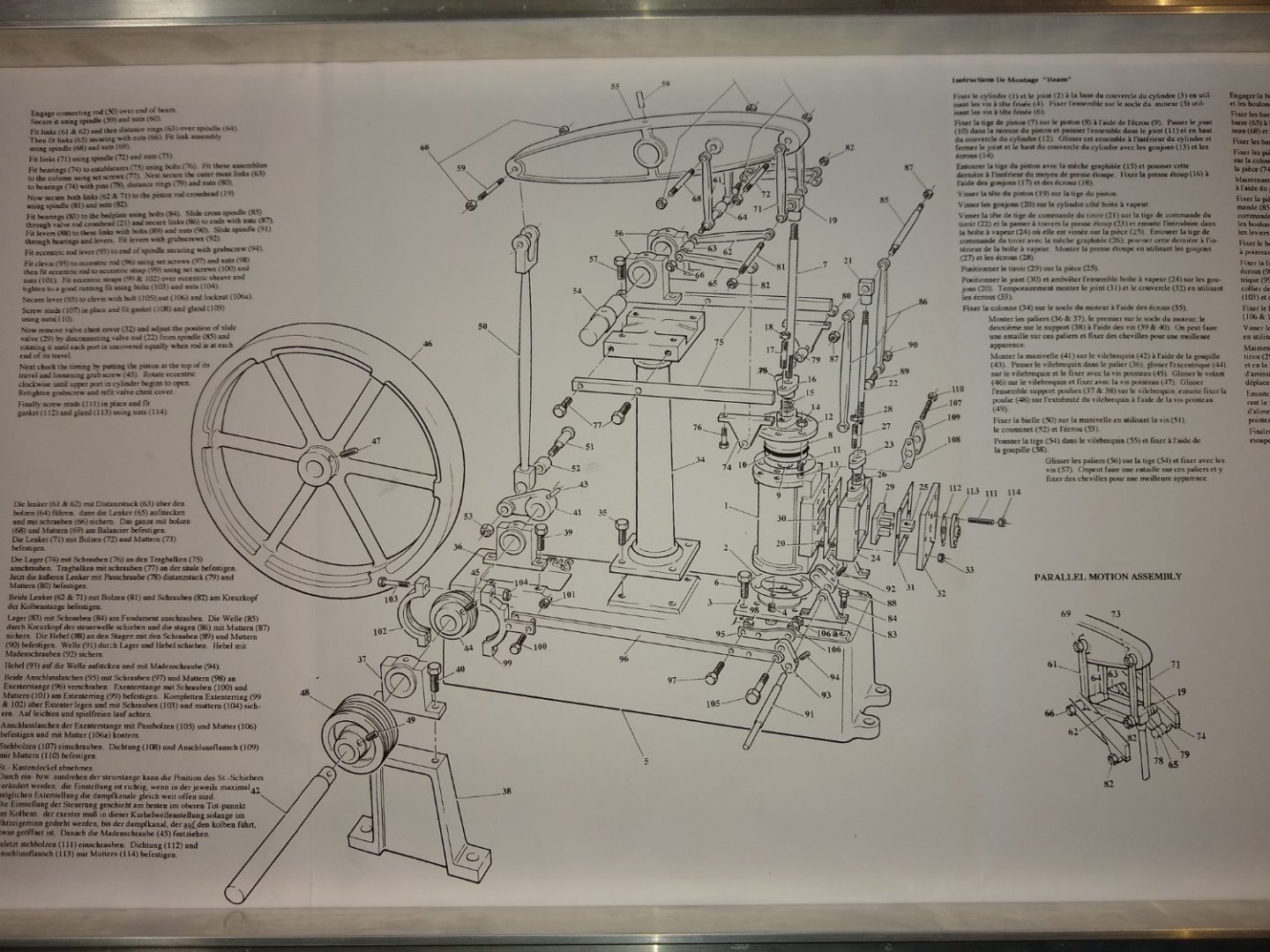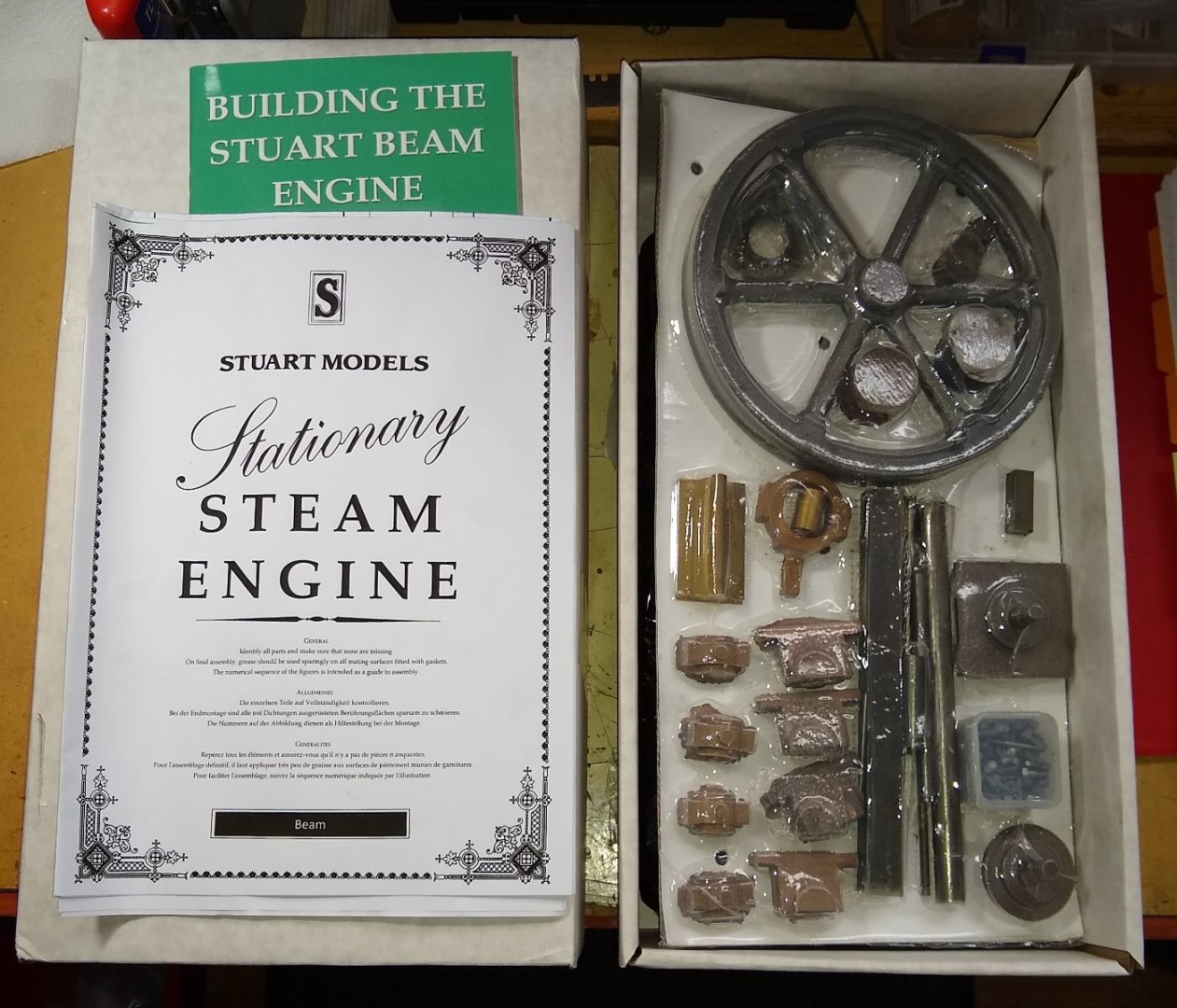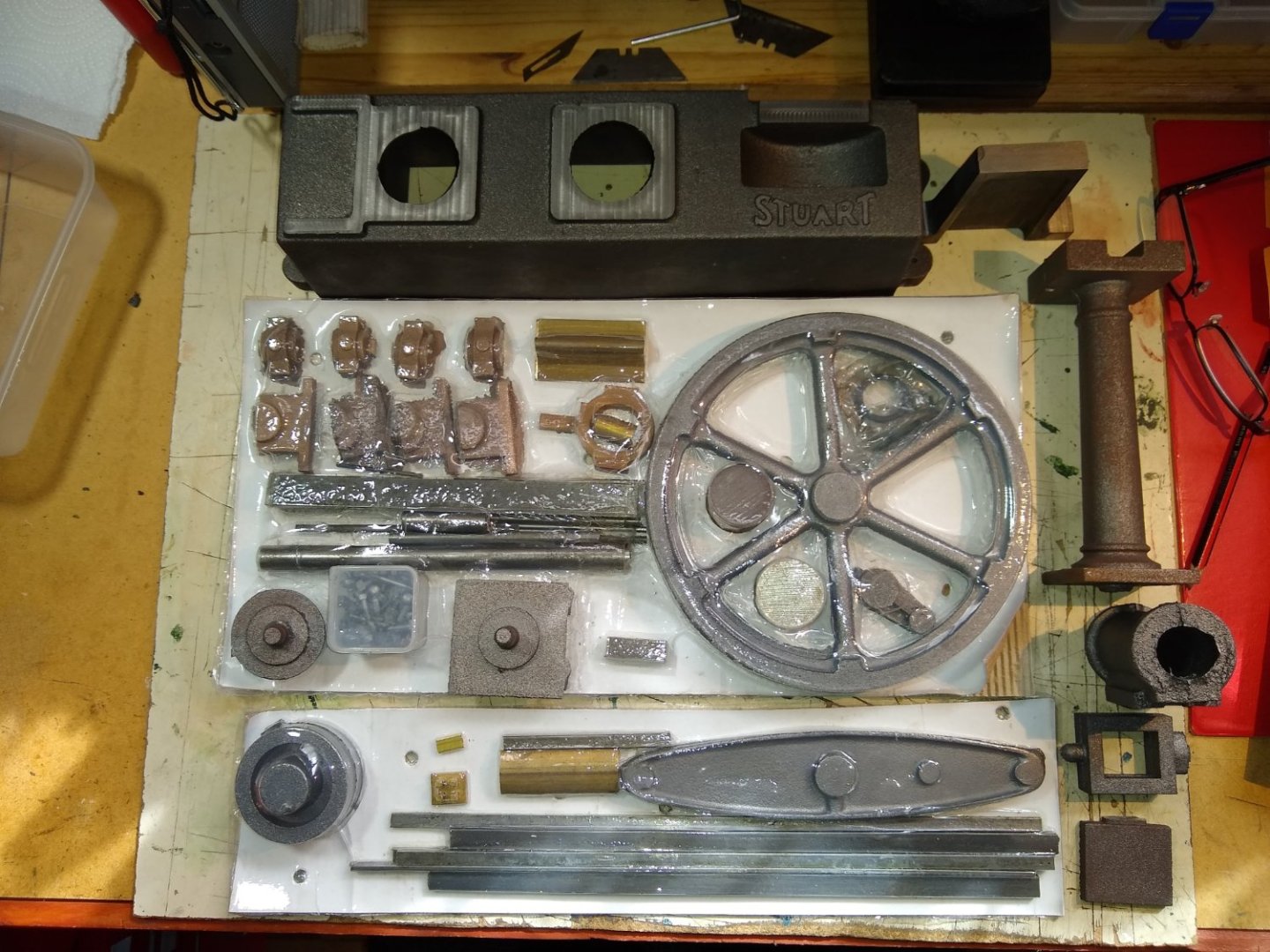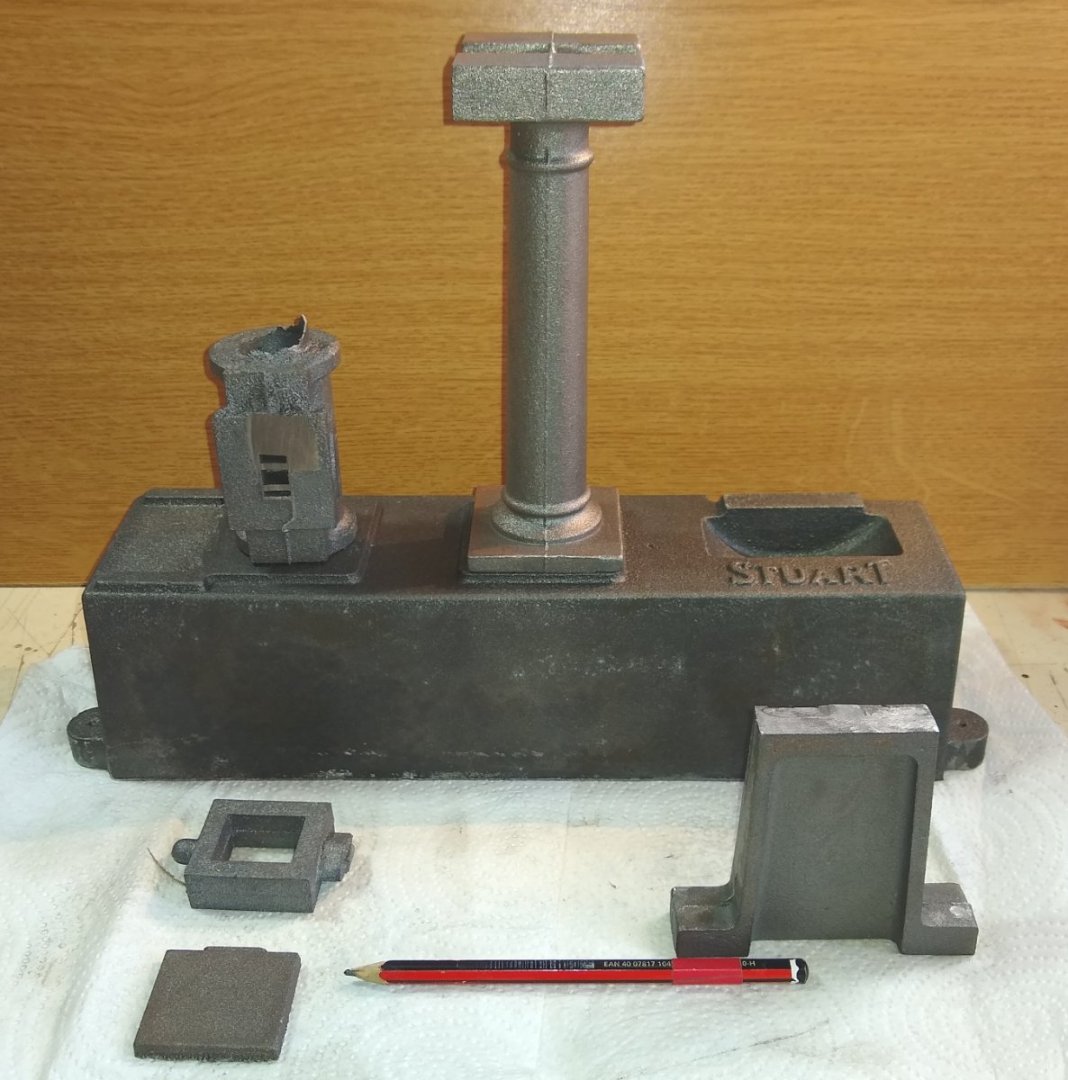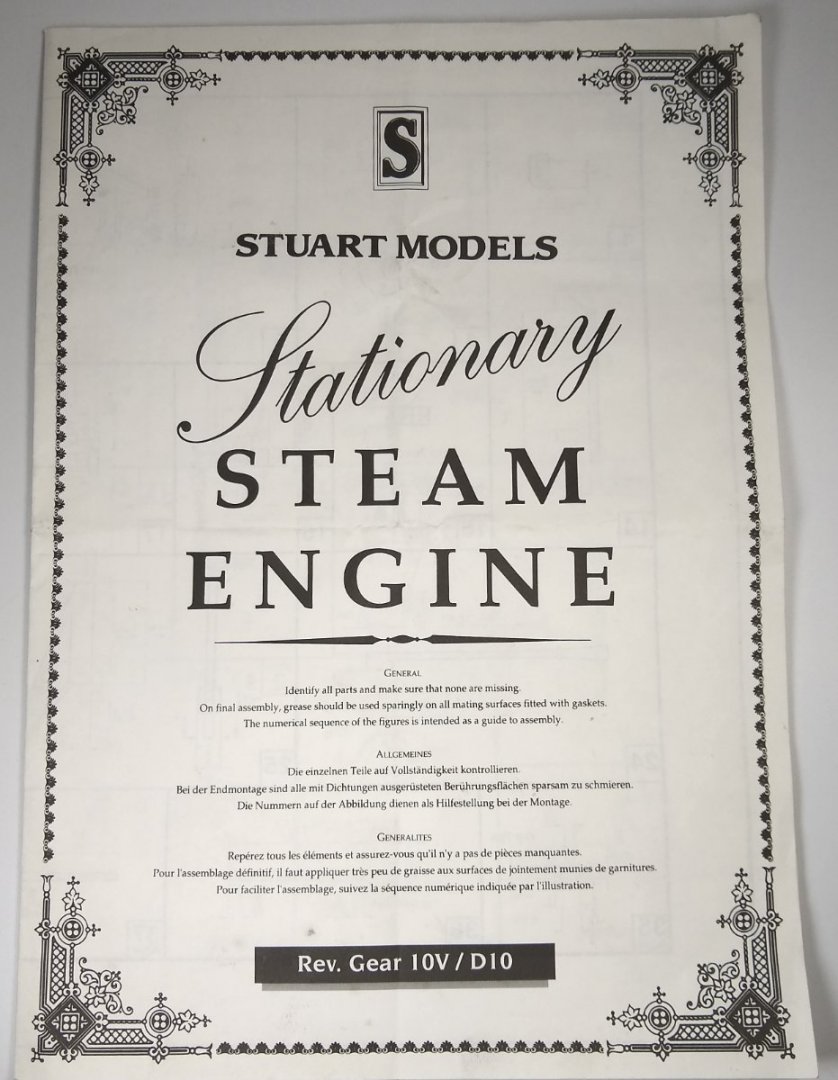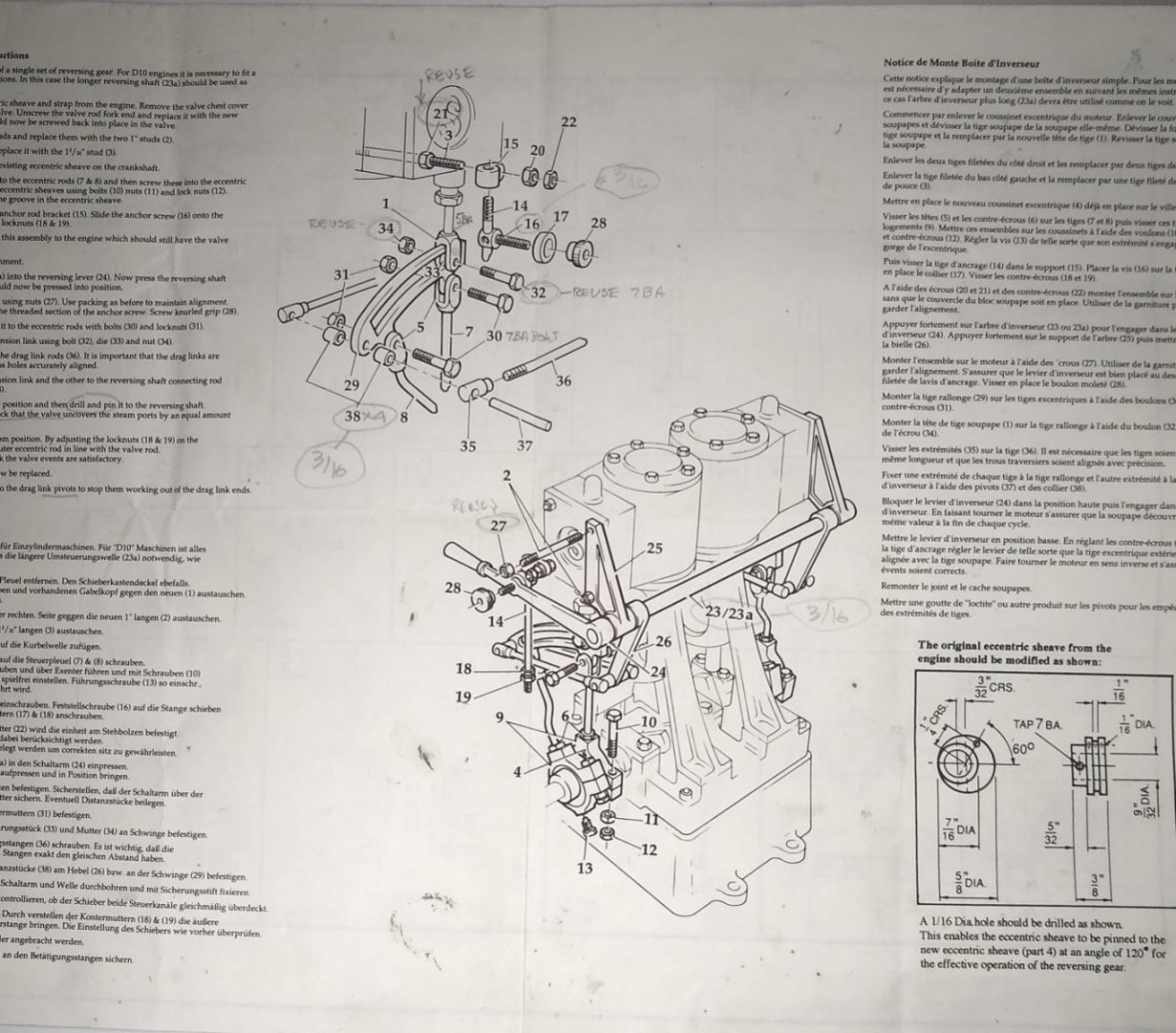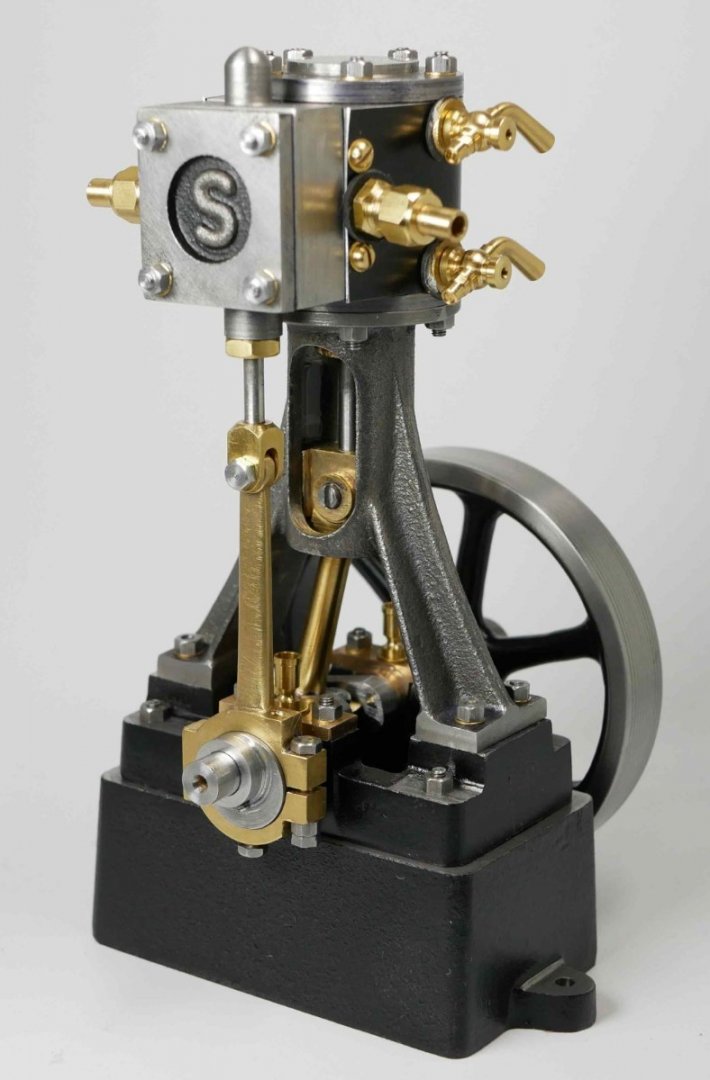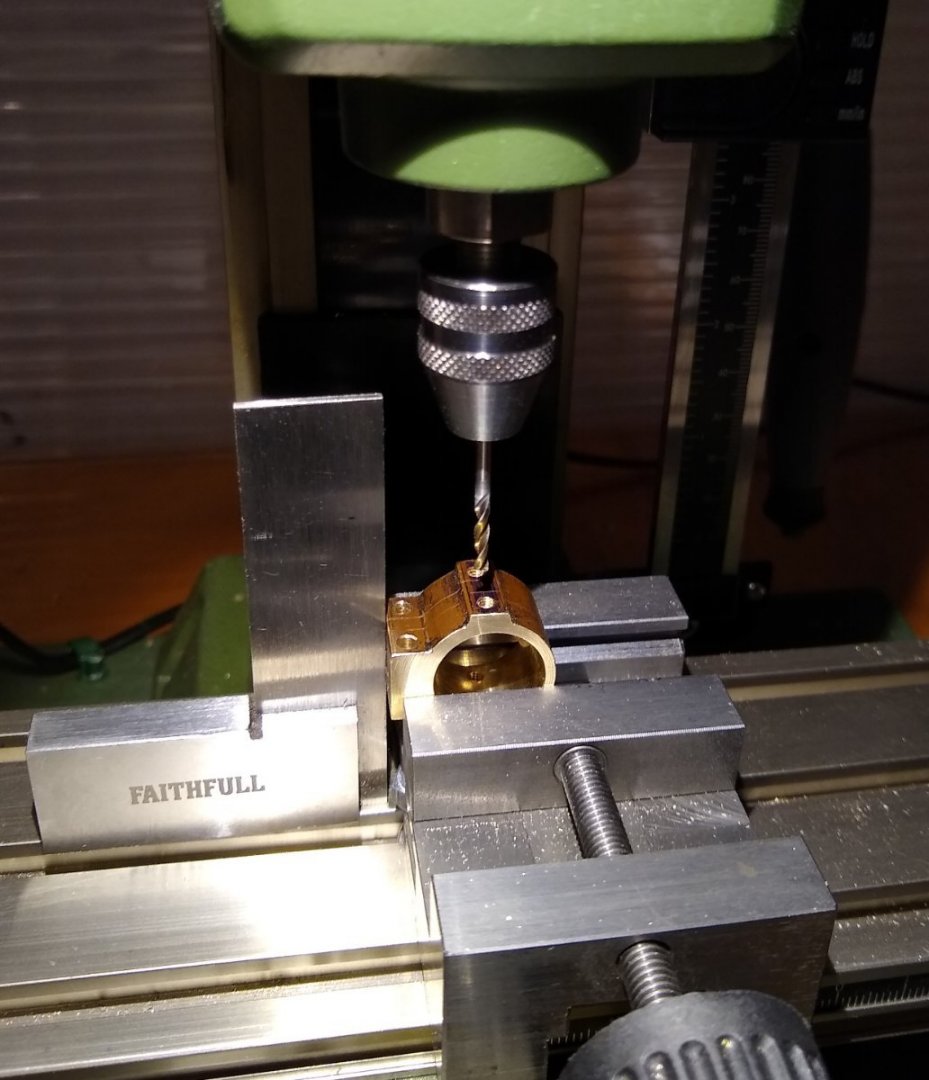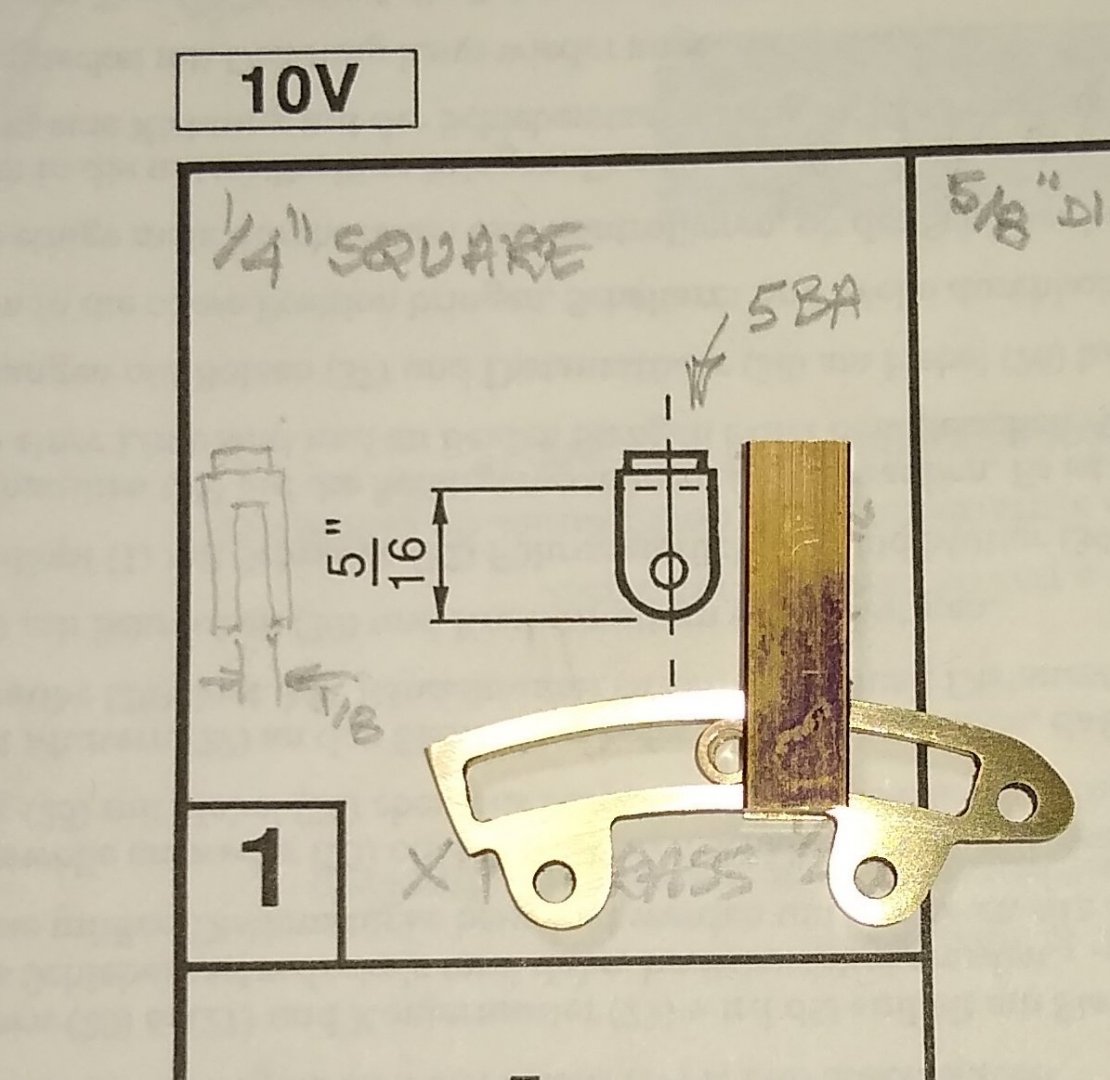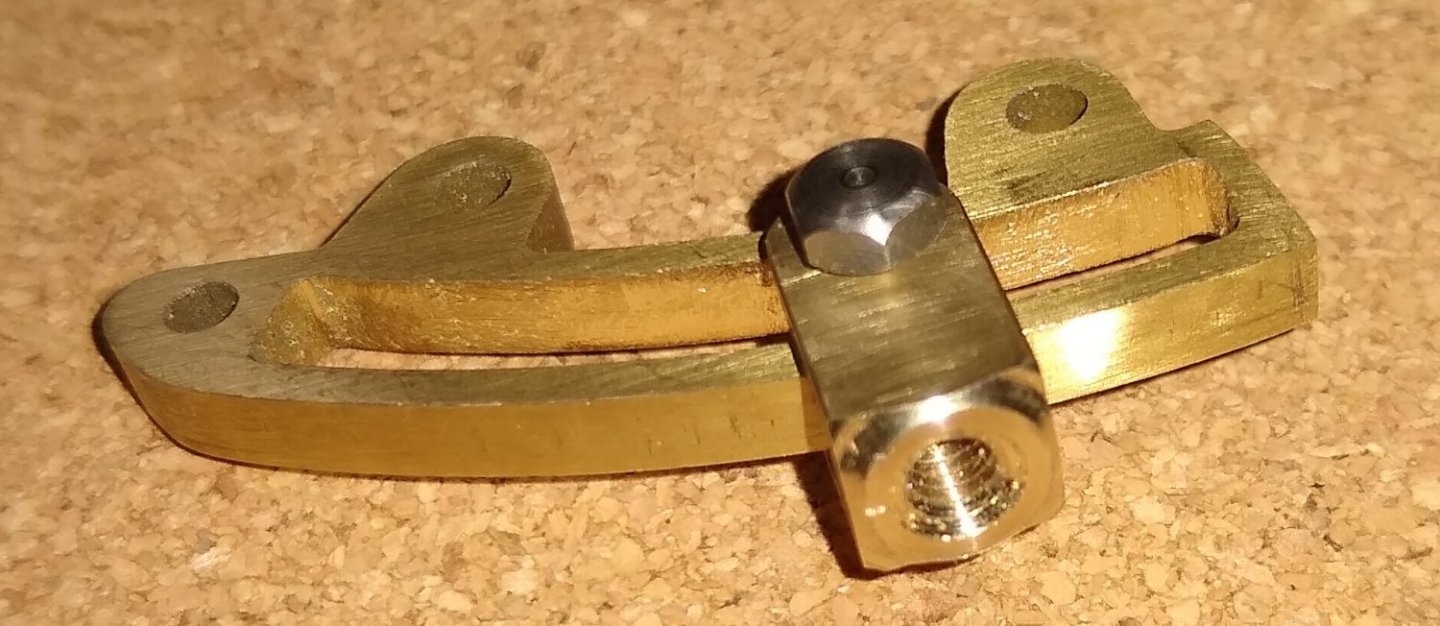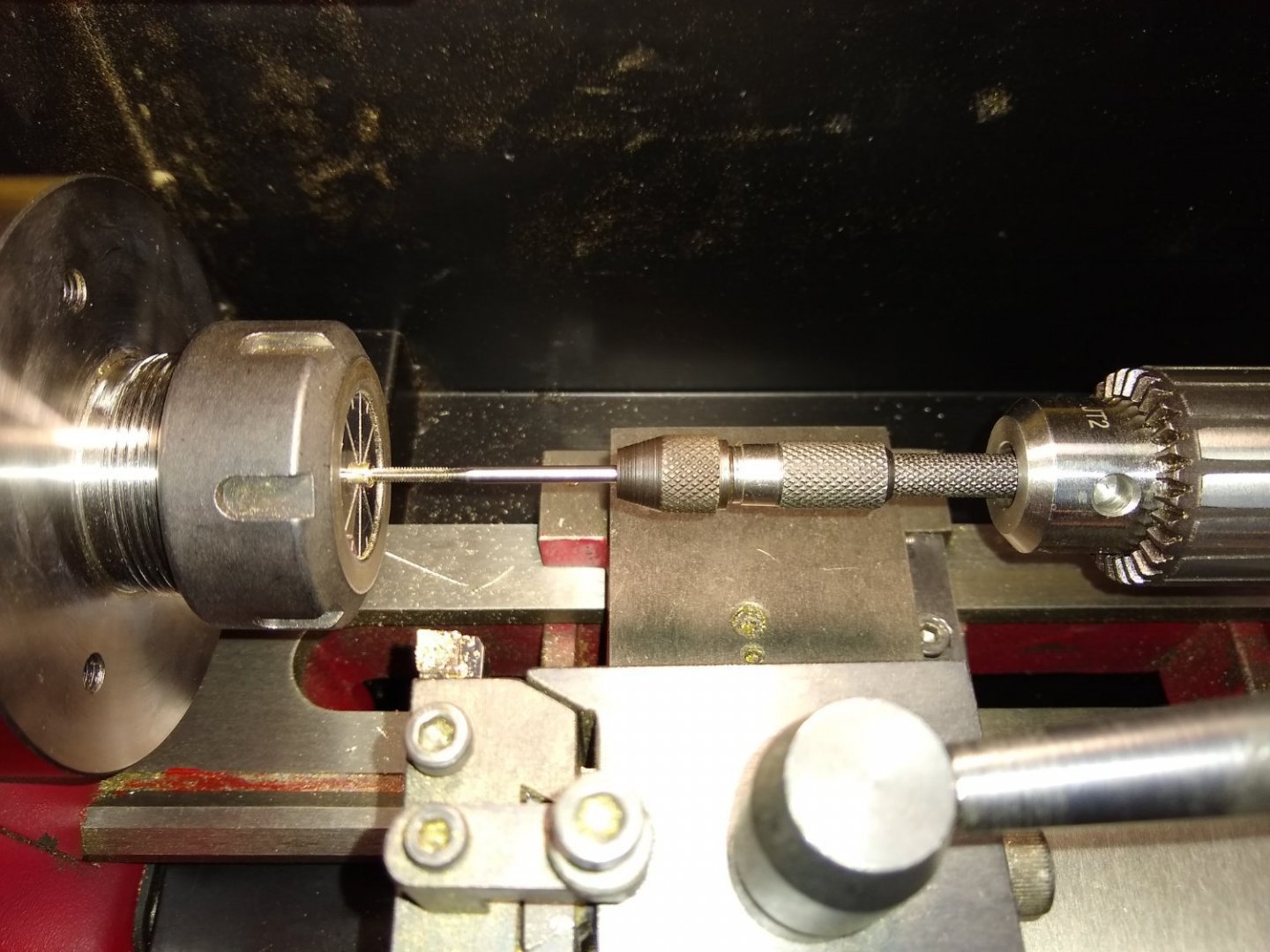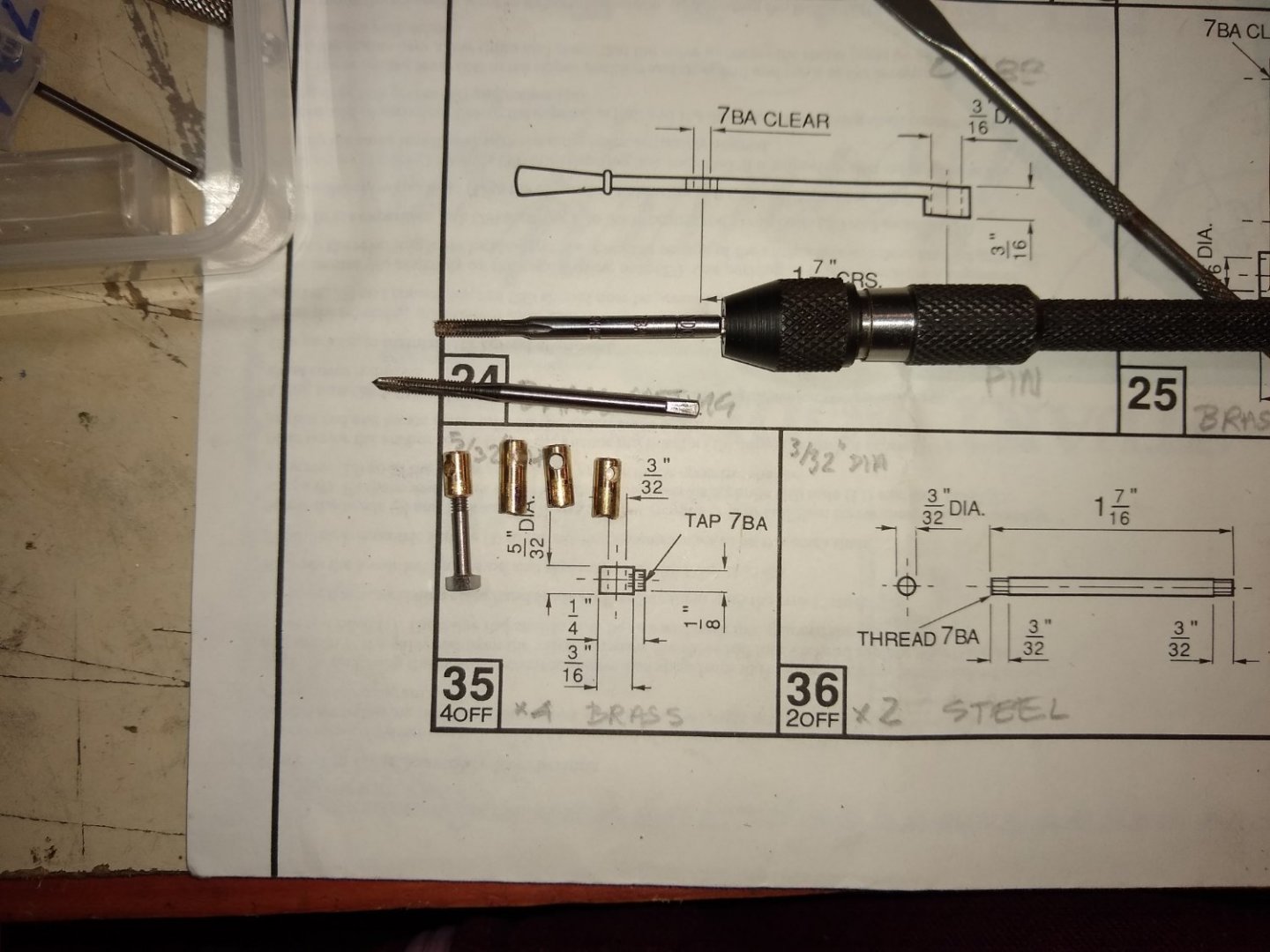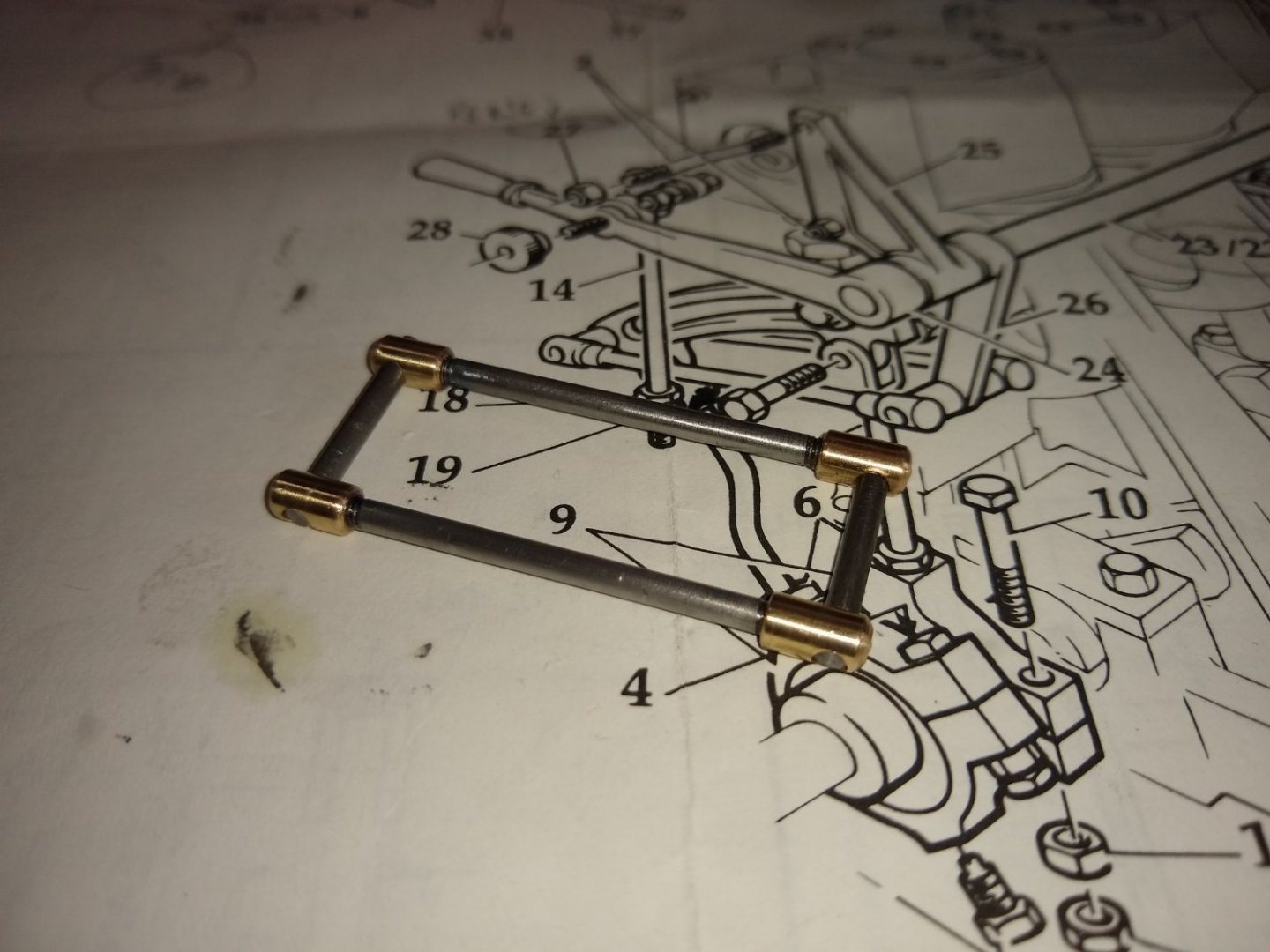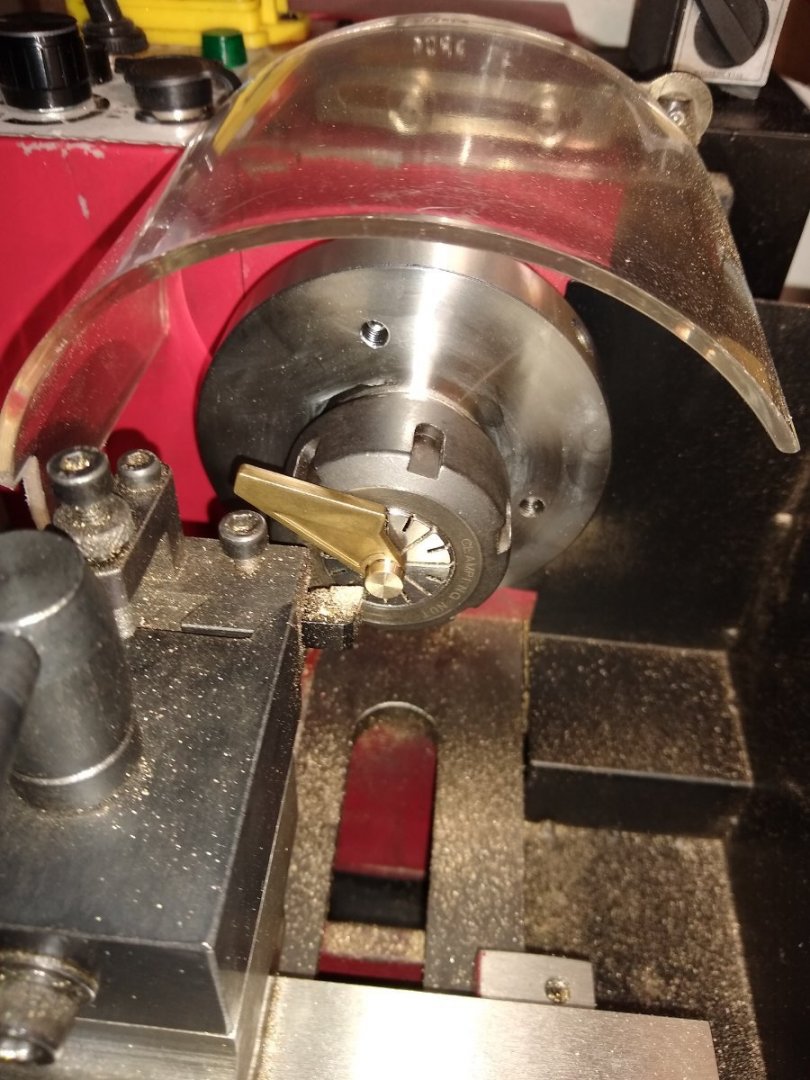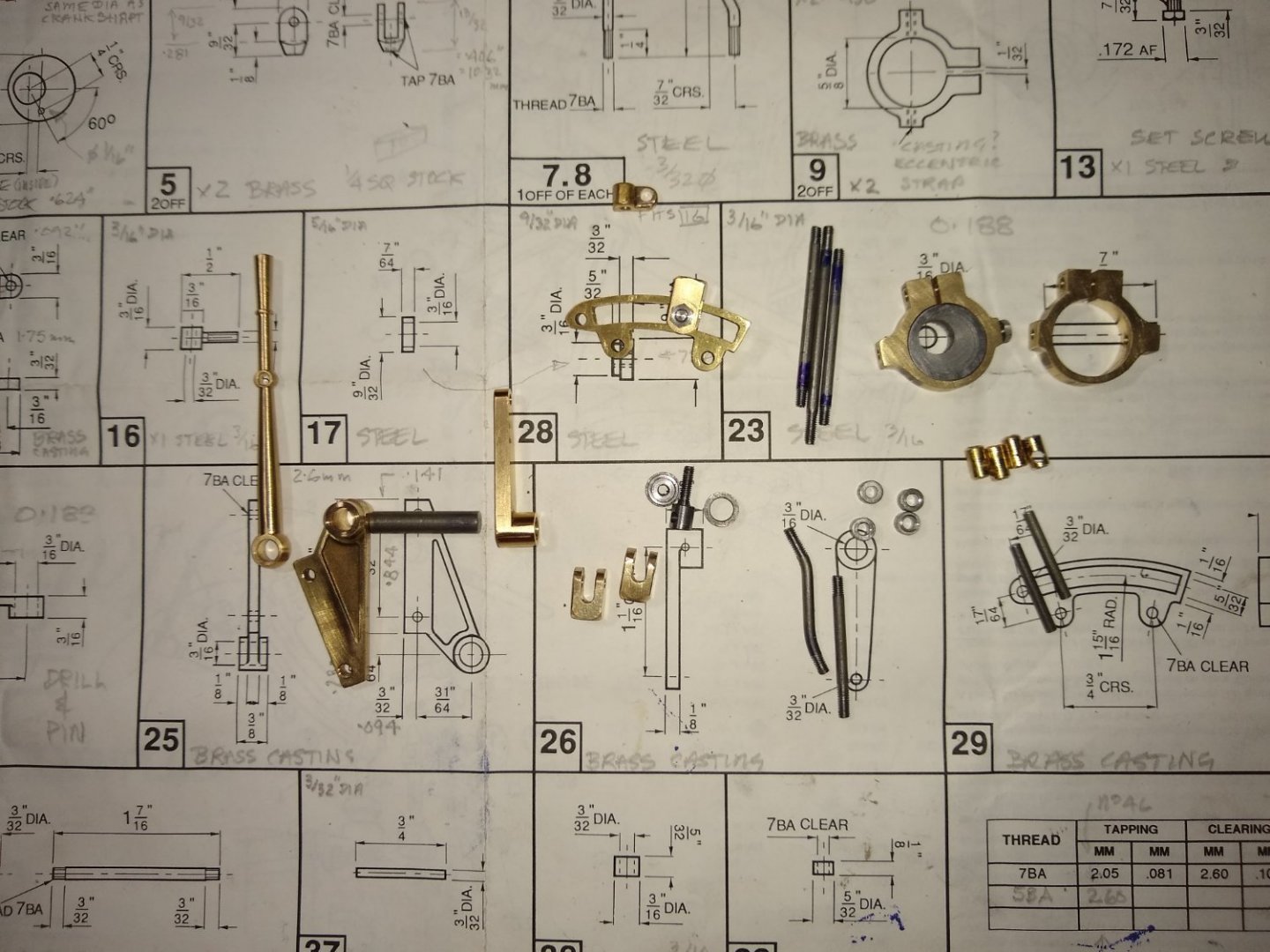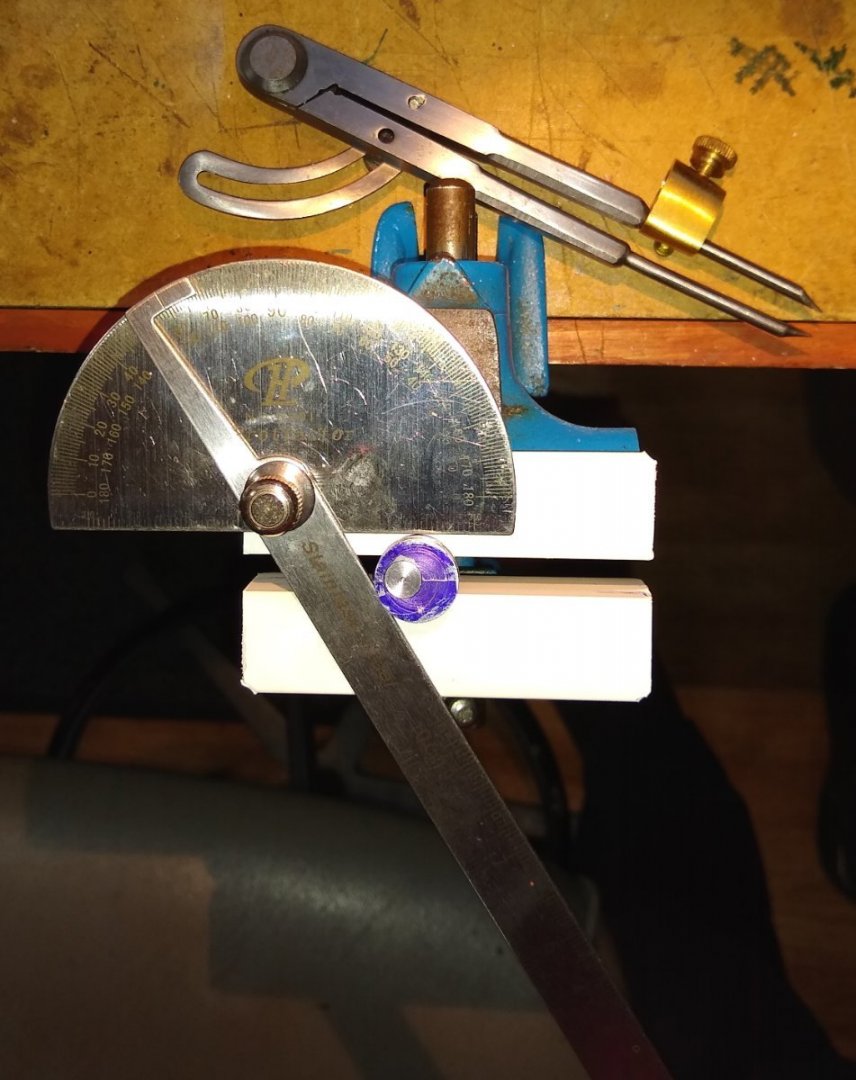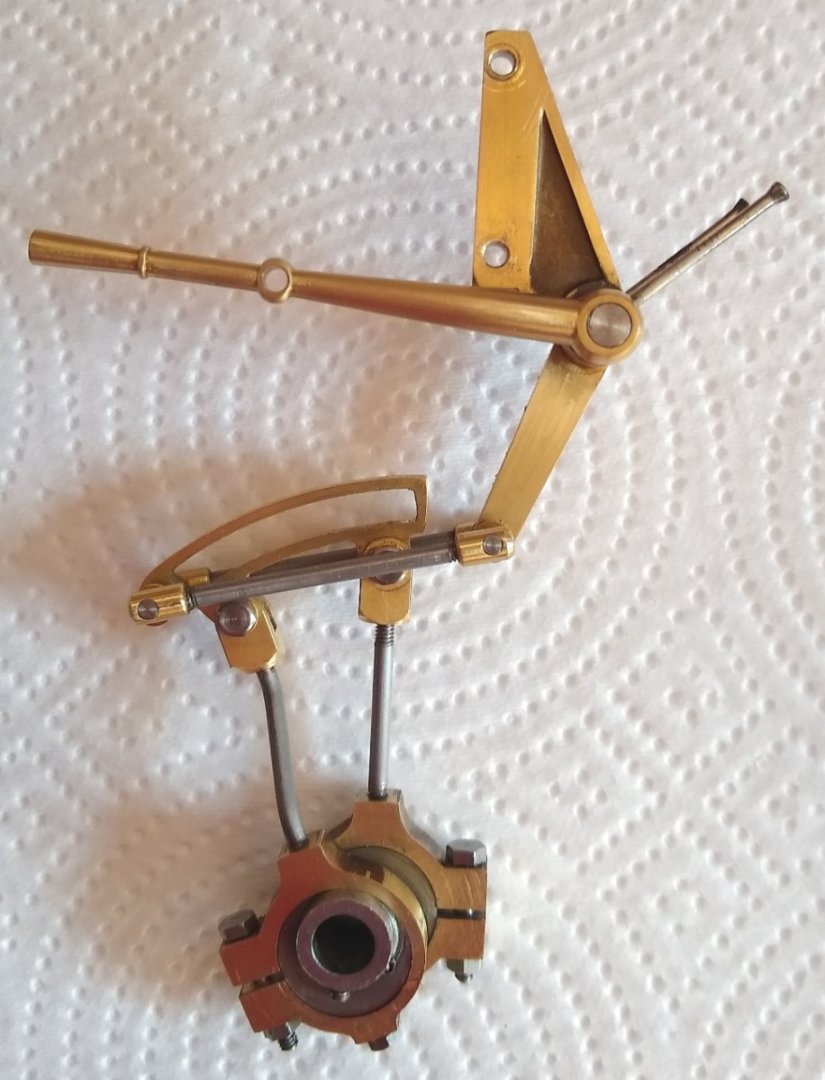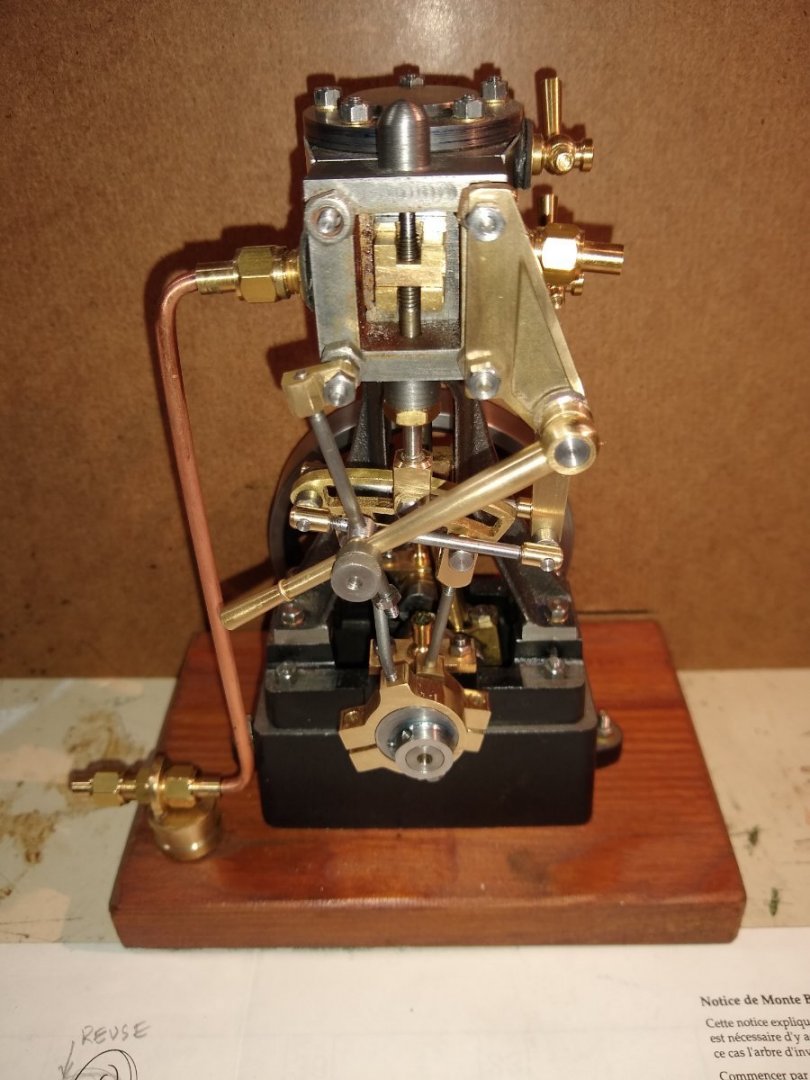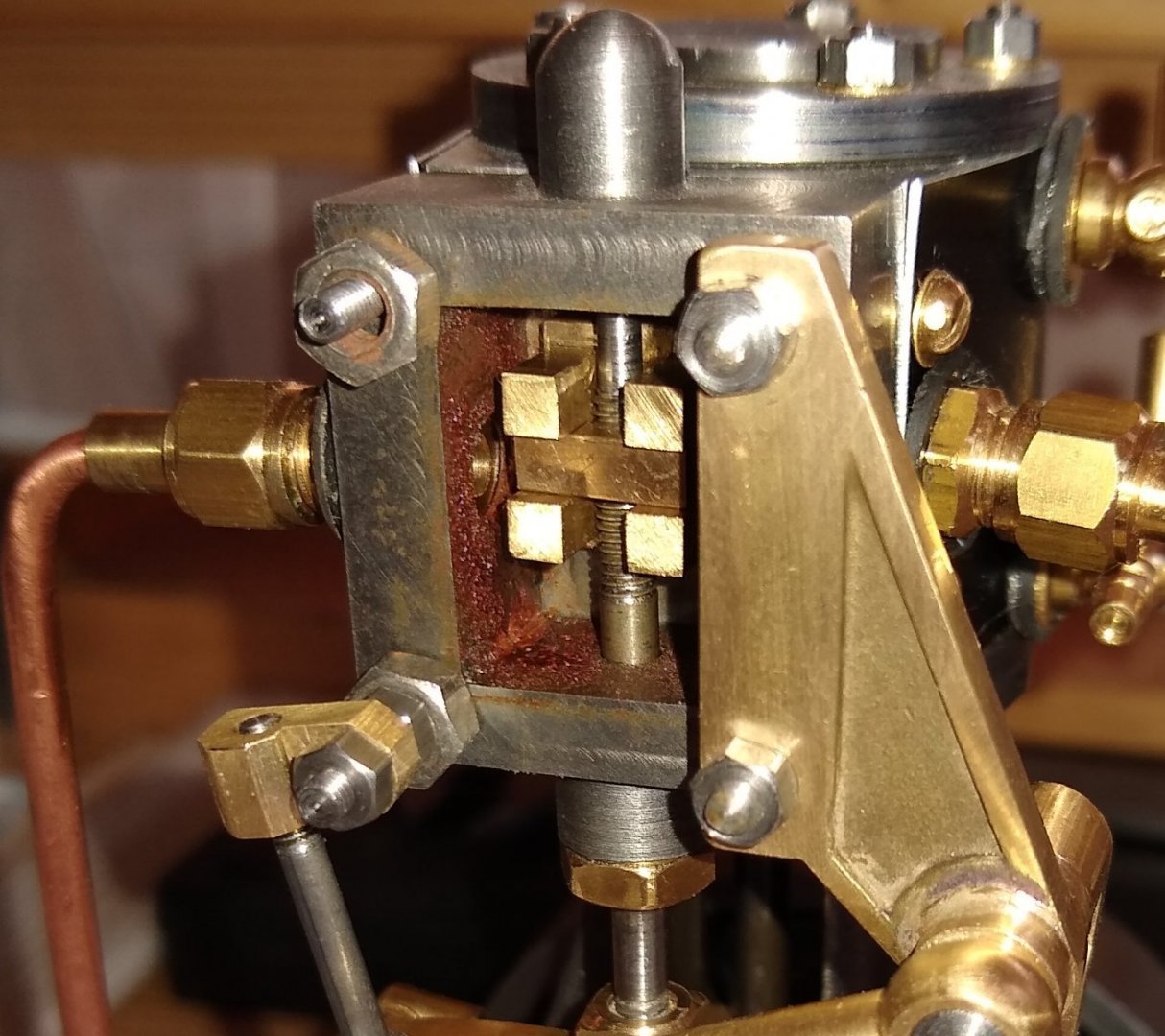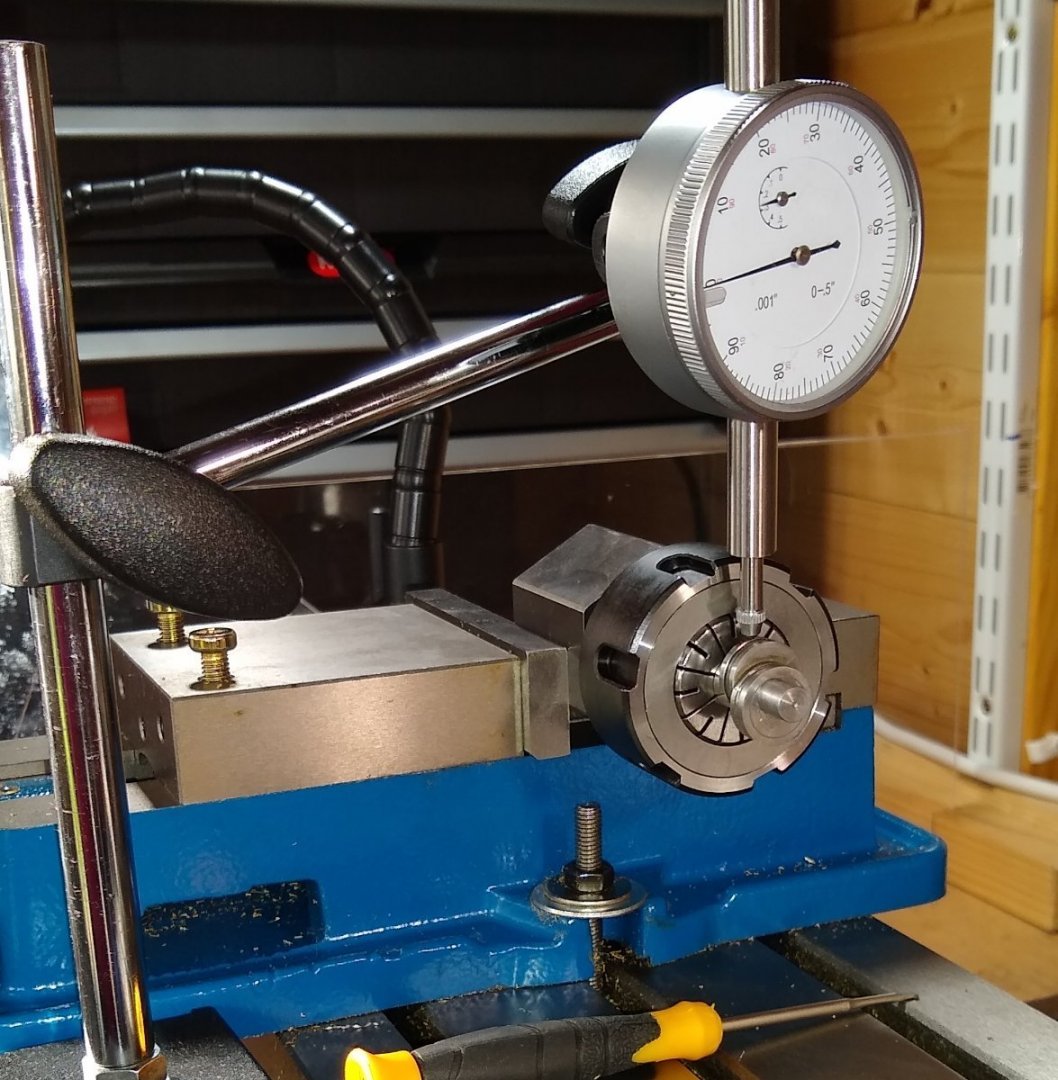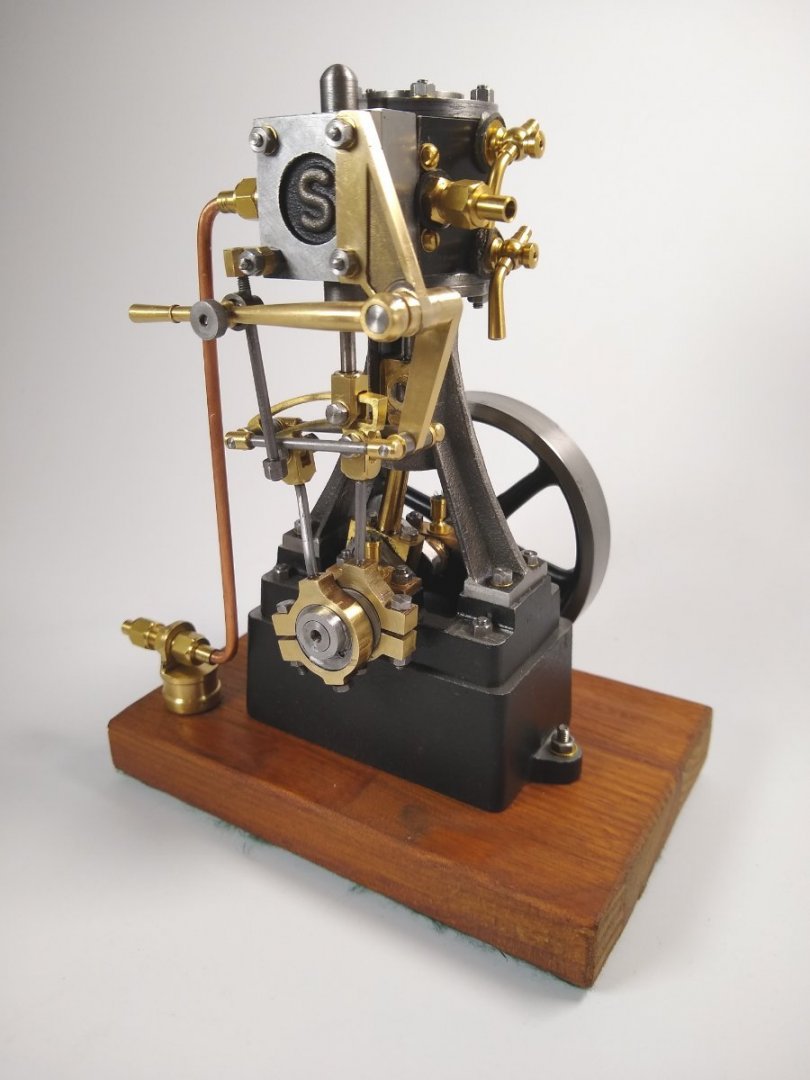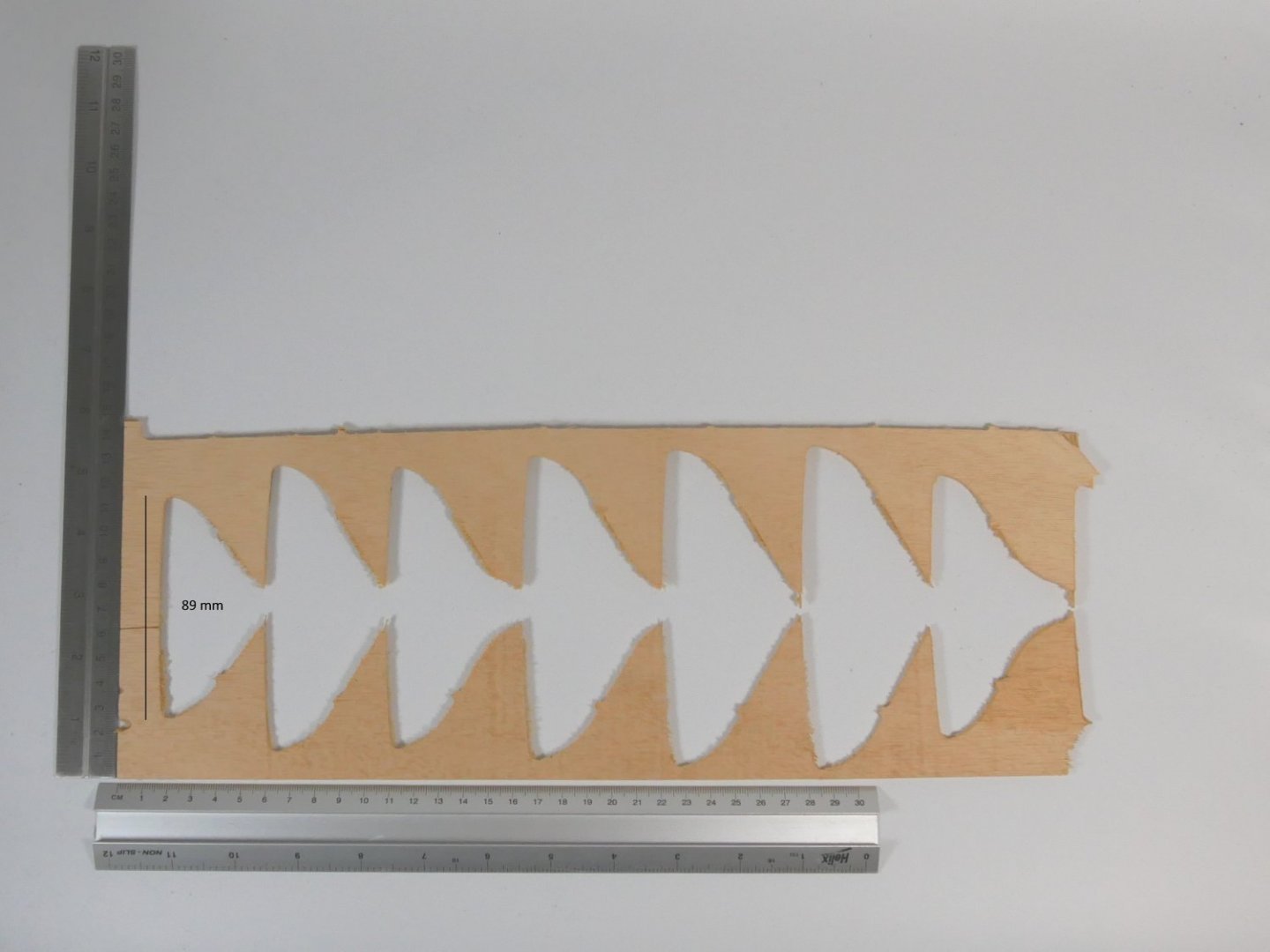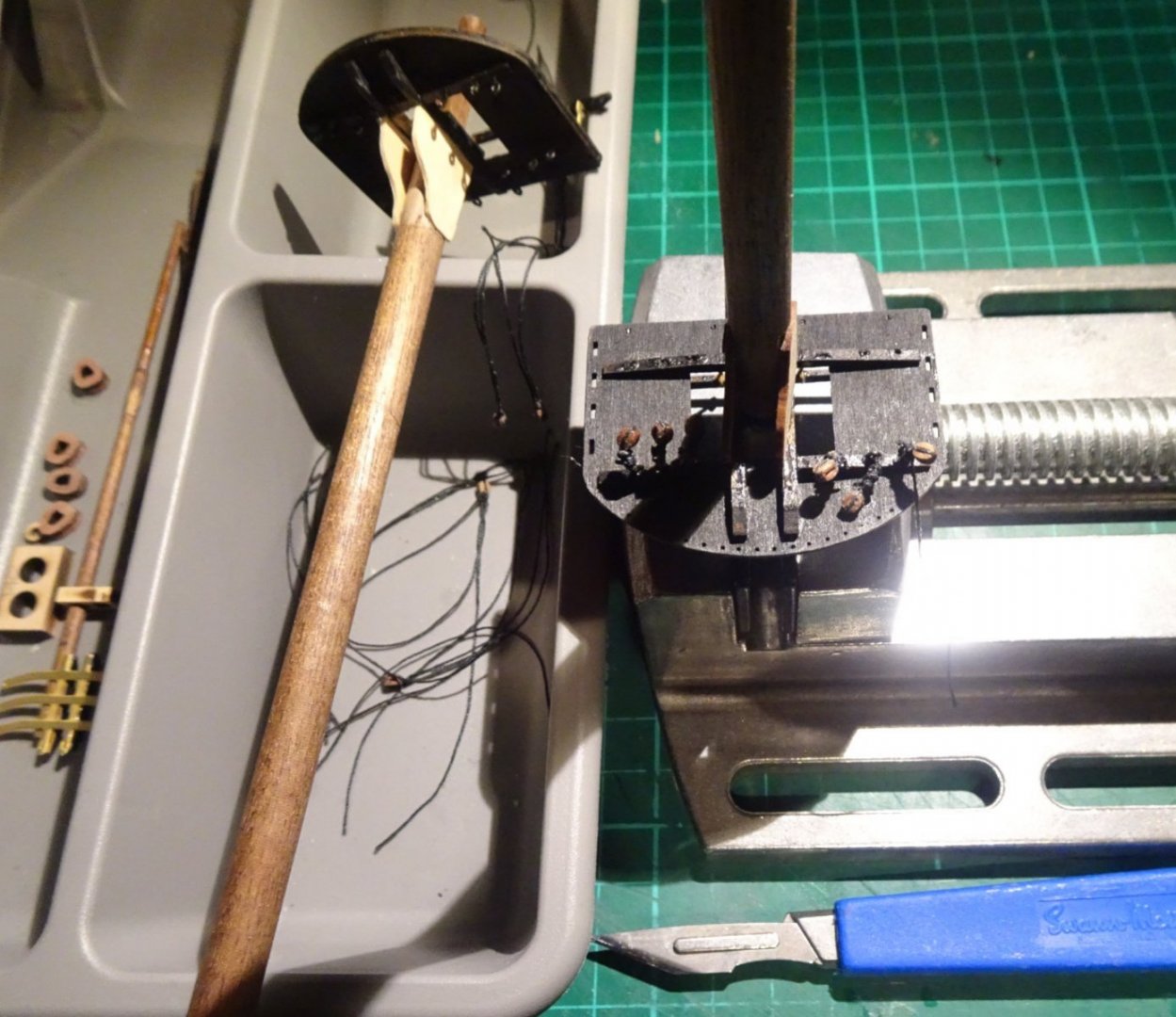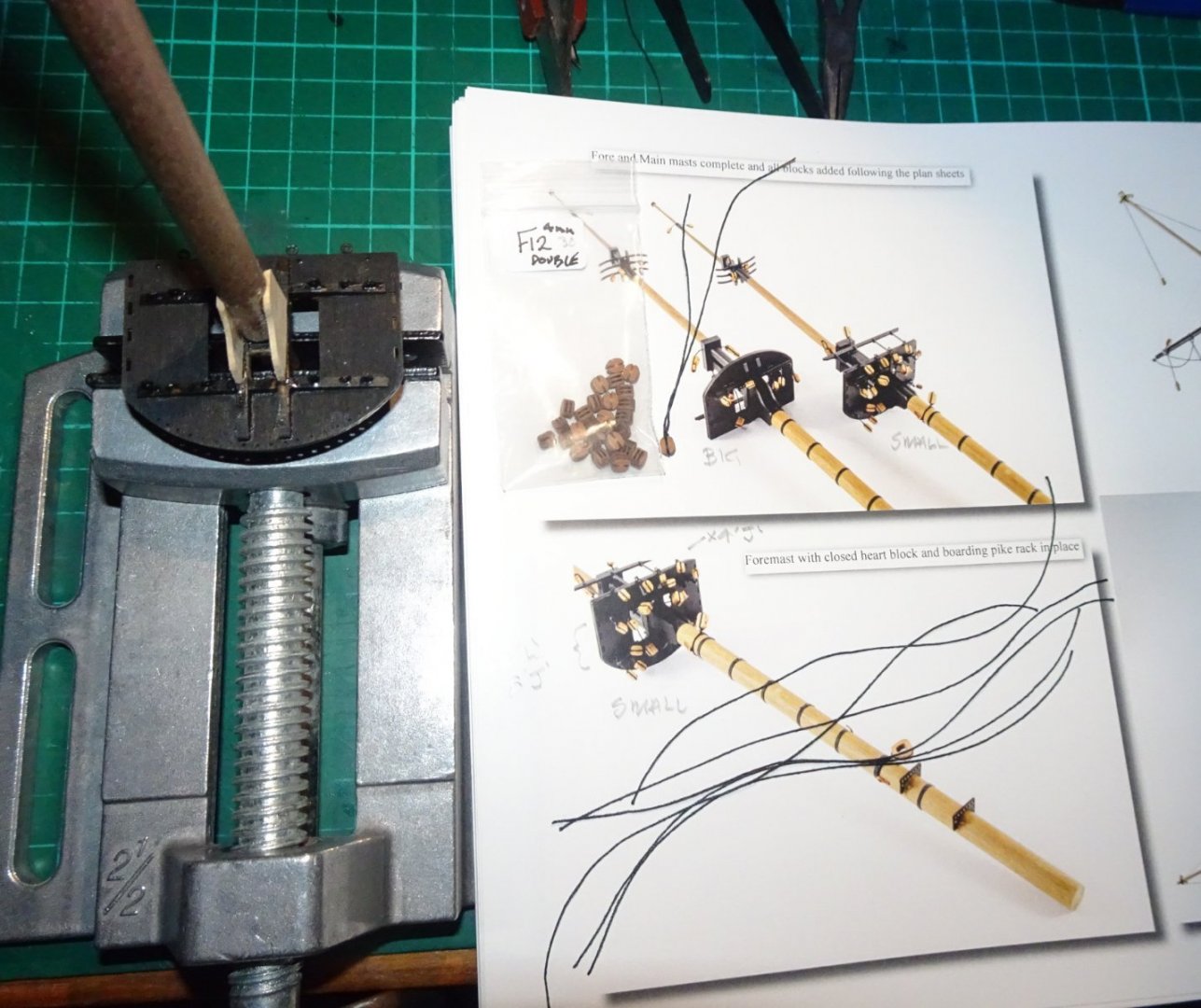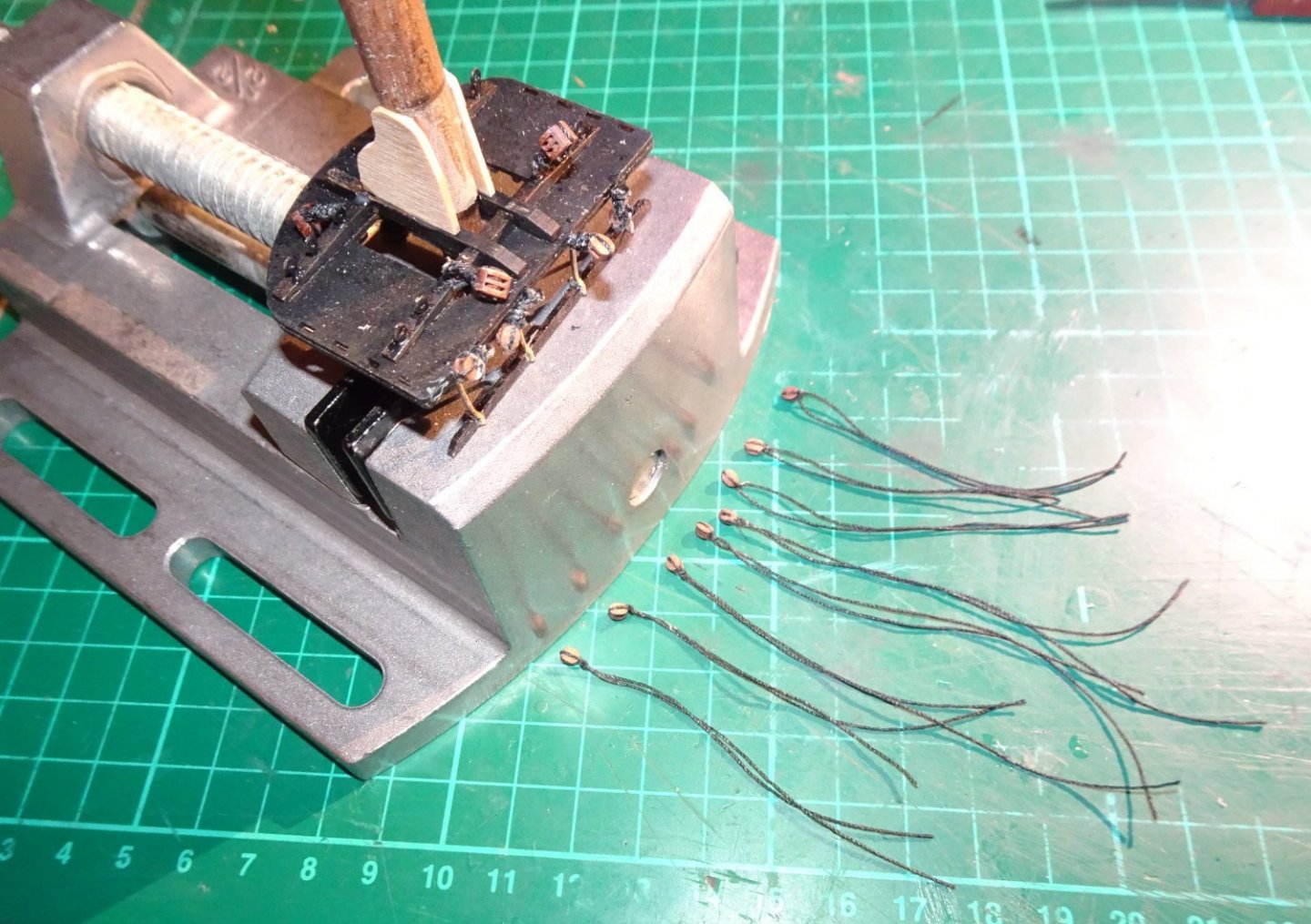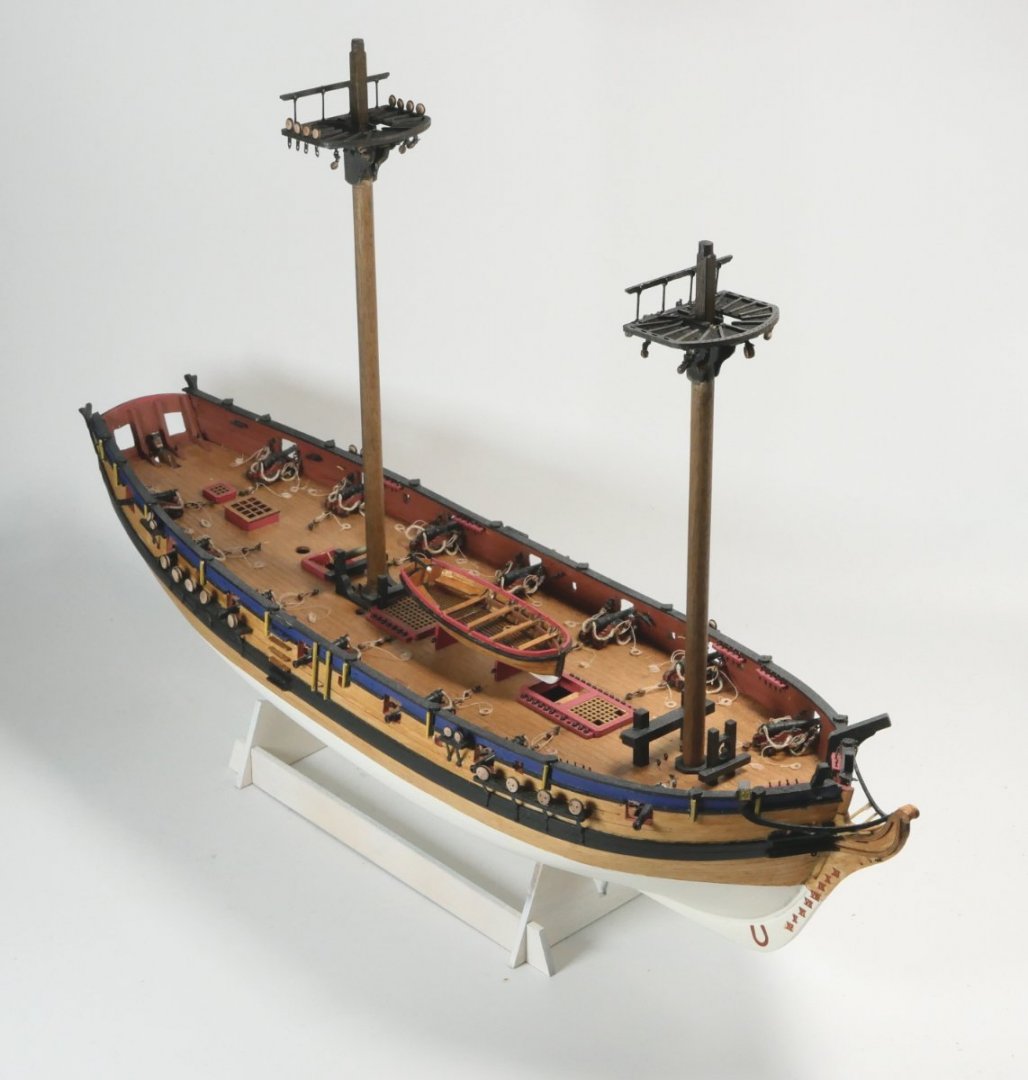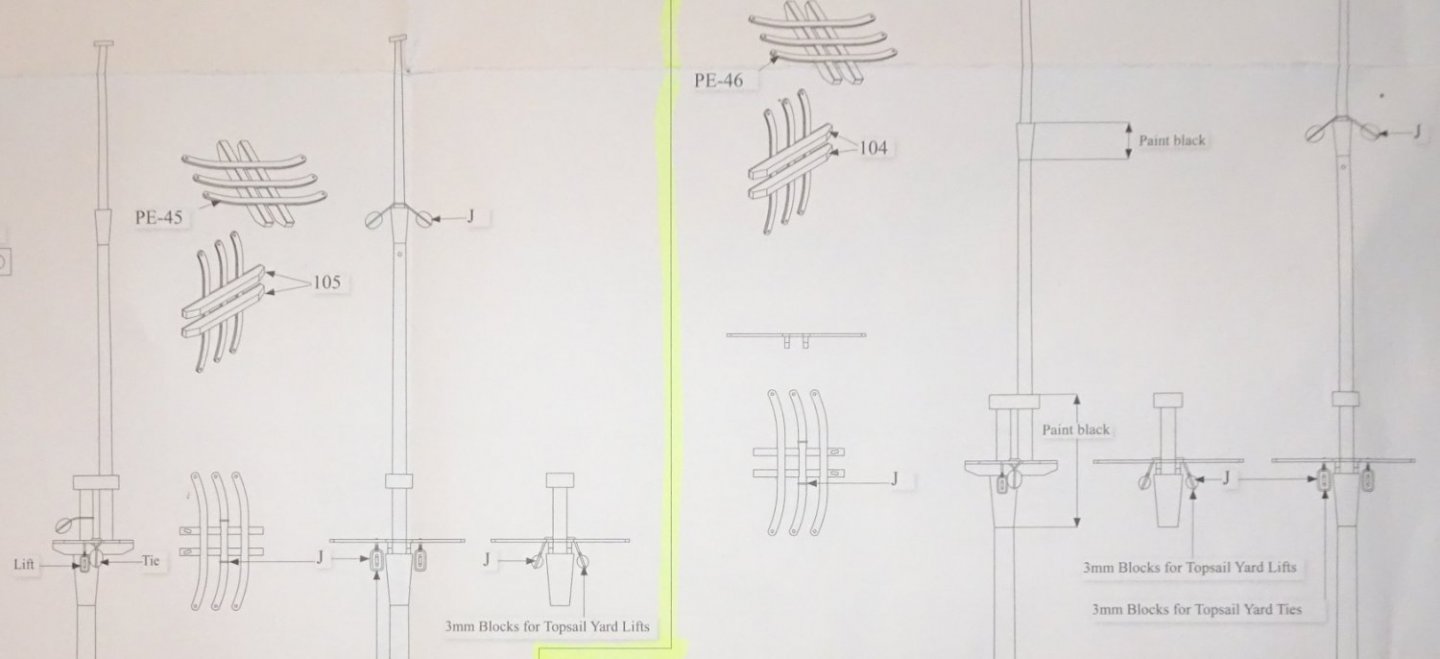-
Posts
847 -
Joined
-
Last visited
Content Type
Profiles
Forums
Gallery
Events
Everything posted by Rik Thistle
-
Hi all, Thanks for the Likes .... and Egilman... yes, materials are continually improving although I suspect that Stuart Models, who came in to existence in the very late 1800s, may still be using using some of their original casting equipments and methods. OK, that's a slight exaggeration but Stuart do hold on to their practices for a long time, which probably isn't a bad thing. Today I'll focus on aspects of the Cylinder, that part of the engine where the energy of the steam is turned in to work. Below is the exploded diagram showing the Cylinder...Part (1) over on the right side. As can be seen from above, the Cylinder has a Piston inside that moves up and down courtesy of the Valve (29) alternatively applying steam pressure to the Piston's (8) top and bottom surfaces. The power chain is.... Piston Rod end> Beam end at the right> Beam end at the left> Connecting Rod> Crank> Crank Shaft> Output Pulley. The Flywheel (46) stores energy, and also helps smooth out the 'explosive' outputs from the steam entering the Cylinder ends. Below, the cast Cylinder as it arrives in the box. Stuart Models give the cast parts a quick grind at their factory to remove the more obvious flash from the casting process. However, in this case the grinding went a bit too deep on the Valve face meaning there wasn't sufficient material left to meet the final dimensions. Stuart models happily replaced the part in a few days. Below is the Detail drawing of the Cylinder. You can see on the rectangular front face there are ports marked A2 and B2 ...this is where the Valve lets the steam enter the Cylinder. The steam works it way to either end of the Cylinder (A1 and B1) where it emerges on to the piston face. Above, there are three ports in the centre of the valve face outlined in dotted lines on the drawing. From top to bottom - - A2, feeds steam to Cylinder top, - Exhaust port allows used steam to exit, - B2, feeds steam to Cylinder bottom. Below, there was a lot of black casting sand left in the Cylinder ater the part had been cast - enough to firmly block off the connections between A2/A1 and B2/B1. It took about 30 mins to wiggle it all out with some garden wire. Below, the amount of sand removed. I was quite impressed by how much had crammed itself in there! Below, machining the Cylinder in the mill. The Wixey digital angle gauge proved to be a useful tool throughout this project. Below, machining the valve face smooth and flat. I later filed the three openings approximately to the sizes the drawing requested...I'm wondering now if I should have actually used a small diameter milling cutter to more accurately form those openings?...maybe, but from what I recall the openings weren't exactly in the positions the drawing showed. Now taking the Cylinder to the lathe to do some boring work ie open out the hole that the Piston will side up and down in. I wasn't 100% sure whether to bore out this hole first on the lathe and use it as a reference before milling the cylinder faces, or the other way around ie mill or lathe work first? - I eventually decided on 'mill first'. With a bit of careful clocking on the lathe using the 4 jaw chuck I got the Cylinder positioned good enough for a concentric bore. Below, finishing off the bore. It ended up about 10 thou" (0.25mm) undersize...enough spare material, should I later decide to do some honing on it. Below, are the two end caps that seal off the Cylinder (Bottom cap left, top cap right). Not the easiest of things to hold in a lathe....fortunately Stuart leaves a casting shaft protruding for gripping in the lathe. These shafts should be turned to a smooth finish before being turned around and held in the lathe chuck jaws. Setting up the Cap shafts for turning by using a drill chuck to hold the Cap square whilst the 4 Jaw was adjusted to grip the Cap. The already shiny perimeter of the Cap was done on a grinding wheel (to remove the hard cast outer layer) so is not that accurate, yet. It will be once the shaft is held in the 3 jaw chuck. Finally, the Piston (mounted on the Piston Rod).... and it's 'Piston Ring' aka O RingWhen the O Ring was originally fitted to the Piston it sat about 40 thou (1mm) proud of the Piston, which was of no use. I investigated alternative, small CSA O Rings and also tried some of the supplied Gland Packing material ...but no joy...none of them was going to give a reasonable piston seal/sliding action in the Cylinder. Note: The piston was already a sliding fit in the Cylinder so could probably have worked OK without any O ring. I eventually hit upon the idea of using Emery cloth to grind away about half of the O Ring till it was almost flush with the Piston. And after a few trial fits and a bit of lubricant this worked a treat 🙂 Well, that's it for today. Next up should be the Valve apparatus. Regards, Richard
-
MSW was down for me in the UK - appx 10.30am - 4.30pm. Then it came back up for about 90 mins then down again, and has now resurfaced this morning at 10.15 am. Below is the error message that popped up after 30 secs or so. The 'new posts' all have a date stamp of '17 hours ago'. It seems I lost a Post I made yesterday afternoon in the 90 min window, but no big deal. Richard
-
The first part to be machined was the engine's base, officially known as the 'Bedplate'. Below, I cleaned up the Bedplate by filing off casting flash before presenting it to my SX2P mill. The table of the mill measures 15 3/4" (400 mm) x 5 3/4" (145 mm) which meant it was 'just' large enough to hold the Bedplate. I think I used a 3 flute (diameter 8mm or 10mm?) carbide cutter for most of the machining on the Bedplate. Since cast iron can exhibit almost diamond hard surfaces if cooled too quickly, carbide tooling can sometimes be necessary .... High Speed Steel would blunt in a second. I don't recall any hard spots on the Bedplate but generally you never know they are there till you hit them. Below, clamping the Bedplate to the mill table. The four mounting lugs plus the underside of the Bedplate were skimmed level. Below, and flipping the Bedplate over (onto it's now-flat-base, I machined the mounting pads for Linkage Bearings, Cylinder, Column and Flywheel Bearing. Whilst I had the Bedplate on the mill I also drilled and tapped the holes (not shown) in the pads. As you can see, the clamps at both ends just fit on the length of the mill table. Below, checking the height of one of the pads during the milling operation with a 2nd hand Moore & Wright 1" depth gauge and a 1-2-3 block. I bought the depth gauge of eBay in the Spring, and once it was cleaned up it was as good as new. Note: The assembly isn't sitting on a paper towel 😉 ... it's sitting on a 1/4" thick 'Surface Plate' made of float glass. Below, the cast iron Cylinder Bottom Cover being machined on the mill. The Cover attaches the Cylinder to the Bedplate, and it did have some hard spots around the corners where it would have cooled quickest. OK, that'll do me for today. It's been a while since I did any Posting on the Forum so I feel a bit rusty ...apologies for any glitches. Regards, Richard
-
Hi all, This is a record of my Stuart Beam engine build. The suppled kit consists of cast iron castings, various sizes of brass and mild steel bar, fixings etc. It is available here - https://www.stuartmodels.com/product/stuart-beam-unmachined/ Rather than try to capture every step in the manufacture I'll concentrate on some of the more interesting/challenging aspects. But firstly, a bit of background on 'beam engines'. They had been about for quite a while before James Watt came along with his 1776 patent to improve the efficiency of the engine which turned it in to a more practical and cost-effective way of supplying power to various industries ( https://en.wikipedia.org/wiki/Beam_engine ) Watt also designed the Beam engine's Watt Linkage which allowed the vertical motion of the piston rod end to connect to the beam end (which describes an arc). One of the main applications of Beam engines was to pump water eg help supply a town's population with water. Quite a few Beam engines have survived to this day - a great example is the Rotative Beam Steam Engine At Crossness - https://www.youtube.com/watch?v=Zlp1aG1VJRI These are very graceful but powerful, slow moving machines (typically 11 rpm). My model rotates slightly faster 😉 (And since no 'garage' collection is complete without a Beam engine, Jay Leno also has one ... https://www.youtube.com/watch?v=zoBWAE0win0ce ) Electric pumps eventually replaced these wonderful machines, since they required much less maintenance and less bodies to keep an eye on them (eg oiling all the metal to metal interfaces). So, on to my build. As with the Stuart 10V I bought the booklet that covers the engine build - it was OK but perhaps not as useful as the 10V booklet. The cardboard box this time was much larger and heavier. The contents are shown below. Above, there are two large sheets - Detail Drawing sheet for all the parts, plus a Build guide/Parts list/ Exploded diagram sheet. The actual parts arrive sealed on to two pieces of cardboard. Below, doing a head count of the parts. Below, six of the larger cast items. The very large base (Bedplate) turned out to be a tight fit on my milling machine, with just enough space left at the ends for clamping. Below, the brief build instructions alongside the exploded view. The Beam flywheel is 7" diameter, when finish machined - the 10V's flywheel was 3" diameter, so at times I did wonder if this time I needed a bigger workshop. Well, that's a brief introduction to my Beam ... I'll follow up shortly with a post covering the machining of the base and maybe some other stuff if time allows. Bye for now, Richard
-
Thanks Phil. I really enjoyed building the 10V. I've now started the Beam Engine .... https://www.stuartmodels.com/product/stuart-beam-unmachined/ ...which is a step up and should see me through the summer .... and then I have the Governor set to add to it. HMS Flirt is still sitting on my desk half finished.... I really need to get started on the rigging etc but I don't feel ready for it at the moment. I guess initiative comes and goes in cycles 🙂. I do miss the daily 'forum chat' associated with a ship buld log so I hope to get back to Flirt in the not-too-distant future. Richard
-
Dan, No probs. Actually, now I have had a look at your blog I realise I have already been reading it :-) The dark wooden finish looks great and the darker rubbing strakes etc set it off very nicely. Richard
- 49 replies
-
- Lady Eleanor
- Vanguard Models
-
(and 1 more)
Tagged with:
-
Dan, The colouring I used was 'Rit Dye Powder - Cocoa Brown' ... eg https://www.amazon.co.uk/gp/product/B00AQ6ZGAM/ref=ppx_yo_dt_b_search_asin_title?ie=UTF8&psc=1 I probably spotted it being used on one of the previous Fifie builds, or perhaps Chris recommeded it in the manual. I think I diluted it a little. Do you have a Fifie build log we can look in on? Richard.
- 49 replies
-
- Lady Eleanor
- Vanguard Models
-
(and 1 more)
Tagged with:
-

kit review 1:200 German Battleship Bismarck - Amati
Rik Thistle replied to James H's topic in REVIEWS: Model kits
James, What a model!. It's a bit too large for me, but never say no 😉 I think the Cost -v- Build Enjoyment ratio will be very good with this model. The detail in the pics is impressive, as are the technologies these ships carried eg two side launching aircraft. Are you actually planning to do a build of this Bismark or was this a Review only?.... with all the builds you have going on I can guess the answer. Regards, Richard PS: And thanks for the 50 min video link...that's earmarked for this evening's viewing. -
Richard, I had responded by mentioning Keith Appleton as a 'beginner who started 4 years ago....whoops... https://www.youtube.com/c/keithappleton/featured. Keith is actually a very experienced hand at building and fettling steam engines and anything but a beginner. He also builds model steam powered boats/ships, amongst many other activities. I had meant to point you towards Andrew Whale .... Learning Turning Metal - https://www.youtube.com/c/LearningTurningMetalbyAndrewWhale/videos. Here is Andrew's first video - Sieg SC3 mini-lathe unboxing - https://www.youtube.com/watch?v=KP1MzFsrSLE Richard
-
Good stuff Richard. You'll soon get the hang of it. As I mentioned there are lots of very informative YouTube videos out there that can be of great general help and more specifically on certian model builds.. I think Keith Appleton only started about 4 yrs ago and has very quickly got to grips with it and then some. Although I've never seen/used Sherline equipment I've read they are very well made and highly regarded. So that sounds like a good choice. One final word, and forgive me if I'm teaching my grandmother to suck eggs, but remember to be 'safe'..ie always wear safety glasses and don't let loose clothing (ties, shirt sleeves ect) anywhere near working machinery. And do some practice emergency stops with the Off button to train memory muscle. Have fun 🙂 Richard.
-
Theodosius, Mark, Thank you for the kind words. It's taken me about a year to go from machine shop beginner to beginner+. Many decades ago I was put through a crash-course workshop 'apprenticeship', but havent used the hands-on side of that for many decades. However, with a bit of practice and perseverance it does (mostly) come back. And these days, there is the internet with all the useful info it can provide. A couple of my favourite YouTubers are Keith Appleton and Blondiehacks ...both well worth watching if you want to get in to this side of the model build hobby. Someone mentioned in a thread here the other day that they tend to have a variety of different hobbies on the go at one time since, I imagine, variety is the spice of life...I'd agree. Regards, Richard
-
Hi Bruce, Yes, you can buy the fully machined, assembled and tested versions of all their products, including the RG ...but they ain't cheap. Thanks for the kind words. The 10V is now sitting between my Dallas and Fifie and seems very happy. I'm sure there's meant to be another ship there also but it seems to still be stuck in the shipyard ...I'll need to find out who's responsible for that ...cough. 😉 Richard
-
Hi all, Stuart 10V Steam Engine - Reversing Gear (RG) update. The RG is used in marine applications for changing the rotational direction of the propeller shaft. I finished and test ran the RG, using compressed air, about a week ago - it performed fine. Following, are some snippets and thoughts/puzzles/errors I encountered during the build. Firstly, as usual, the Stuart drawing/instructions are a single fold-out large sheet, and it uses Imperial sizes so I will tend to stick with those during this post. Below, the exploded views and an indication of the succinct instructions (in English, German and French). The 10V as it stood before the RG was added. Some parts of the engine were removed and modified to work with the RG. Below, a typical part being drilled. In this case the Eccentric Strop(s) that link to the valve rod. The brass part is sliced in two once all the machining is completed, resulting in two Strops. The Expansion Link with a Rod Head about to be machined out of 1/4" square brass stock. The finished Rod Head fitted to the Expansion Link. The Expansion Link is used to switch between Forward and Reverse rotation of the flywheel by locking the Rod Head at either end of the curved, rectangular slot.. There were many holes requiring tapping, mostly 7BA (British Association), which has an O/D of 0.081". Here, I am using the drill chuck (loosely closed) to maintain a straight tapping action, with the tap being held in a pin vice. I could turn the tap by hand since the material was brass, mild steel was a bit more challenging for me and the tap. Below, the four Drag Link brass Ends part way through manufacture. It was important that the the tapped holes and the cross-holes were made square. The Drag Linkage. It did turn out very square. Six months ago it wouldn't have been as good but I'm slowly getting better, and also remembering the skills I learned decades ago. Below is the Anchor Rod Bracket being turned. This part attaches the whole RG assembly to the top half of the engine. A collection of all the parts that needed making. Next was to assemble them all and in a fashion that allowed smooth running...easier than it sounds 😉 Below, one of the two Eccentric Sheaves being marked out to accept a 1/16" pin that passes though it and the other Sheave, locking them together at 120 degrees. The two Sheaves (similar to cams) control the valve movement (ie when pressure enters/exits the Valve Chest) and so controls the piston/flywheel forward and reverse rotation. Test assembly of the parts. Two 1/16" panel pins were (finally) used to lock the Reversing Lever and Connecting Rod in position. I had initially used thread lock liquid since it allowed positional 'tweaking'. Below, the RG assembly attached to the engine. The Valve Chest cover is removed to observe the valve movement (- small brass square shaped object in the chest middle). For pressure testing I fitted a clear Perspex square to seal off the chest whilst allowing me to observe the valve movement. Ouch!...when I first removed the Valve Chest cover I was confronted by rust. I had been meticulously oiling all the moving parts but had forgotten about the inside of the valve chest. I was impressed by how easily the rust had formed, but bare mild steel + air + moisture always leads to one thing. After faffing about for a couple of days trying unsuccessfully to get the valve timing set correctly to allow smooth running in Forward and Reverse I started to re-examine the parts, particularly the Eccentric Sheave spacing (120 degrees). So I cobbled together a test set up on the mill - finding the high point of the first Eccentric then zero'ing the dial indicator, then rotating the hexagon collet block by two flats (120 degrees) and measuring the second Sheave's high point ...turns out they were only 0.010" apart, if that...well within my acceptable tolerance. That 10 thou would directly translate to the valve movement ie the there would only be 10 thou difference between forward and reverse port openings. Eventually, I got the valve timing sorted. The 10V now runs extremely smoothly in Forward and slightly less smoothly in Reverse but close enough for Jazz. Below, the finished Stuart 10V with Reversing Gear. The Reversing Gear, although a smaller project than the 10V itself, there was more time spent on 'set up'. Lots of new things learned and the time passed enjoyably and quickly, which is what model building is all about 🙂 All the best, Richard
-
Hi juddson, I've had a Proxxon MF70 for a couple of years or so. It was bought for working on model ships and very light metal work, and it does both fine. I tend to now use it mostly for small metal parts for static steam engines. You'll need a good range of Proxxon accessories to make best use of it. It is very quick to set up and use, although small cuts can take a while. On metal, I usually only take 0.125mm (5 thou") cuts at time, 0.250mm if I'm feeling adventurous. It is very compact. I have screwed it to a permanent wooden base which is then clamped to the table. It is high speed (and therefore noisy) so I tend to wear ear defenders when using it. Regards, Richard
-

Artesania Latina 1:50 Dallas 1815 Revenue Cutter
Rik Thistle replied to Capt Mongo's topic in Wood ship model kits
Capt, I do have the plans, as I believe you do also. I also have most of the wood that surrounded the bulkheads before they were pressed/cut out. The wood is missing Bulkhead 9 towards the far right of the picture below., but it might be enough to get the show on the road. Regards, Richard PS: The pic looks like it has some barrel distortion but is actually like that in reality. I seem to remember the wood and shapes were fairly roughly marked out and nowhere near as accurate as modern kits. -

Artesania Latina 1:50 Dallas 1815 Revenue Cutter
Rik Thistle replied to Capt Mongo's topic in Wood ship model kits
Capt, I finished this ship a little while ago. IIRC, the plans 'might' give the bulhead shapes to scale. I think I still have the plans, somewhere. I'll have a look and get back to you, hopefully within a couple of days. Richard -

2nd hand items
Rik Thistle replied to Mary-Ann Cockburn's topic in Modeling tools and Workshop Equipment
Mary-Ann, The ship modelling club at Anstruther (as linked above) sounds like a good first bet. I believe it is linked to the Scottish Fisheries Museum. They have 25 members and seem quite active. Maybe drop them an email. As has already been said ,I'm quite sure your relative would be happy that their tools etc to go to people with a similar mind set. I hope it all works out OK for you. Regards, Richard -
Hi Glenn, through the slot Yes, it could be that; I'm just not 100% sure. I'm beginning to kinda convince myself that the J blocks are attached as pairs. Your comment made me look through the Plan Sheets 7, 8 & 9 (rigging etc) and that implies they are in pairs supsended from the two middle crosstree arms. But my ... Q4 - why would the block (and it's partner on the far side?) be at a different height? .... from Post #81 still stands I can't figure out why the blocks are shown at different heights. Regards, Richard
-
Hi all, A small update on where I am, mostly regarding the Main and Fore masts. Below, gluing together the 7mm and 6mm closed hearts for the topmast stays. Below, The two masts were gingerly held in a lightweight vice acting as a 3rd hand. Below, preparing the rope lengths for the some of the single J blocks (item F10). Somehow the double L blocks (F12) sneaked in to the picture. OK, that is the J blocks now attached to their ropes and lined up ready to be attached to the Main Top and Fore Top. The double L blocks had already been fitted. Some black paint had already been applied to ease the final painting with masking tape. The Main Top with most of it's blocks etc attached. Both masts testing their new home. There is still a heck of a lot to do to get the masts completely finished, but now that we are in the middle of (a mild, so far) winter here in Scotland I hope to devote more time to Flirt. All for now. Regards, Richard
-
Hi all, I have a bit of uncertainty regarding the number, type and attachment point of the Topmast Crosstrees' blocks. I wonder if anyone would be kind enough to point me in the right direction. On the image below (from pg 52 of the Manual) it shows the larger Main Topmast Crosstree (left) and the smaller Fore Topmast Crosstree (right) On the left side of the pic above I see 4x 'J' blocks - the uppermost two blocks I can see are attached to the middle legs of the Crosstree (as the drawing below shows) , but the bottom two blocks seem to be attached to something near the mast itself? Q1- where/how are the bottom two blocks attached. .... and on the right side I see 4x 'J' blocks - two are attached to the middle legs of the Crosstree, and the other two as per on the left side? Q2 - See Q1.... (Note: I also see a fifth block but I believe that is attached to the 3mm square section of the mast?) Below is a crop from Plan Sheet 5 (Fore and Main mast). This time, the left side shows the Fore mast and the right side shows the Main mast. From above ... on the left side of the crop ....ah, as I write this I may see part of the answer....there are a pair of 'J' blocks hanging from each of the middle legs of the Crosstree. Q3 - are the J blocks suspended in pairs? On the right side above, I see a block suspended at a different height (in the view where it mentions 'Paint black'). Q4 - why would the block (and it's partner on the far side?) be at a different height? I've been staring at this block arrangement for about two weeks on and off and getting nowhere, so hopefully someone here can put me out of my mysery 😉 I'm sure the answer will be straightforward, like a crossword puzzle I've been looking at too long. Regards, Richard
-
FlyingFish, The final pic, of you standing at the door, is a real keeper. I'm amazed at how some people have the persistance and skills to keep hammering away at the all superbly crafted fine details till the project is complete. Awfully well done. Richard
-
Andrew, Thank you, yes "Nisha" is diminutive, but I think there was a bit of distortion in that shot as it makes her look tiny. Picture below against a 12inch rule. Widest part of her beam will be just under 3 inches when finished. I didn't have a mental picture of her size till now. Since bench/shelf/display room is an issue in my study the relatively smaller size of Nisha makes her more attractive, and she is still on the same scale as Vanguard's other models (1:64). Anyway, she's coming together very well in your build. Richard
- 206 replies
-
- Vanguard Models
- Brixham trawler
-
(and 2 more)
Tagged with:
-
Welfalck, What a great selection of books on that website ... https://www.camdenmin.co.uk/ Thanks for the heads-up. Richard
-
Steve, She looks fine in the pic, but maybe you are finding some 2nd planks don't sit flush next to their neighbours? IIRC, I had a bit of that ...I locally unglued those areas, slipped a thin section of sanded plank/shim underneath the 'sunken' planks to push the misaligned planks out to lie flush with the adjacent plank. Then a final sanding and all was resonably flat and plenty good enough. Richard
About us
Modelshipworld - Advancing Ship Modeling through Research
SSL Secured
Your security is important for us so this Website is SSL-Secured
NRG Mailing Address
Nautical Research Guild
237 South Lincoln Street
Westmont IL, 60559-1917
Model Ship World ® and the MSW logo are Registered Trademarks, and belong to the Nautical Research Guild (United States Patent and Trademark Office: No. 6,929,264 & No. 6,929,274, registered Dec. 20, 2022)
Helpful Links
About the NRG
If you enjoy building ship models that are historically accurate as well as beautiful, then The Nautical Research Guild (NRG) is just right for you.
The Guild is a non-profit educational organization whose mission is to “Advance Ship Modeling Through Research”. We provide support to our members in their efforts to raise the quality of their model ships.
The Nautical Research Guild has published our world-renowned quarterly magazine, The Nautical Research Journal, since 1955. The pages of the Journal are full of articles by accomplished ship modelers who show you how they create those exquisite details on their models, and by maritime historians who show you the correct details to build. The Journal is available in both print and digital editions. Go to the NRG web site (www.thenrg.org) to download a complimentary digital copy of the Journal. The NRG also publishes plan sets, books and compilations of back issues of the Journal and the former Ships in Scale and Model Ship Builder magazines.


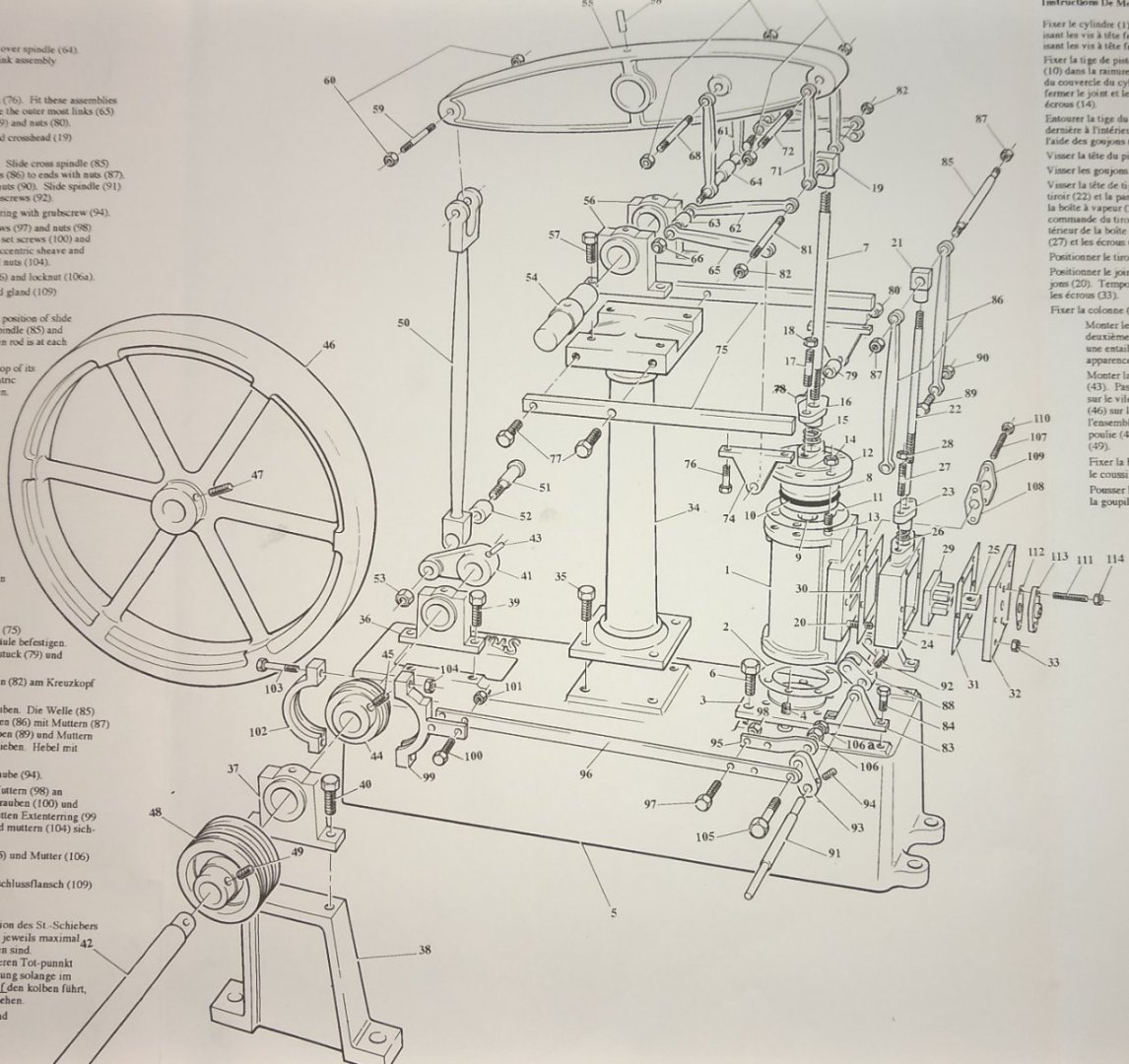
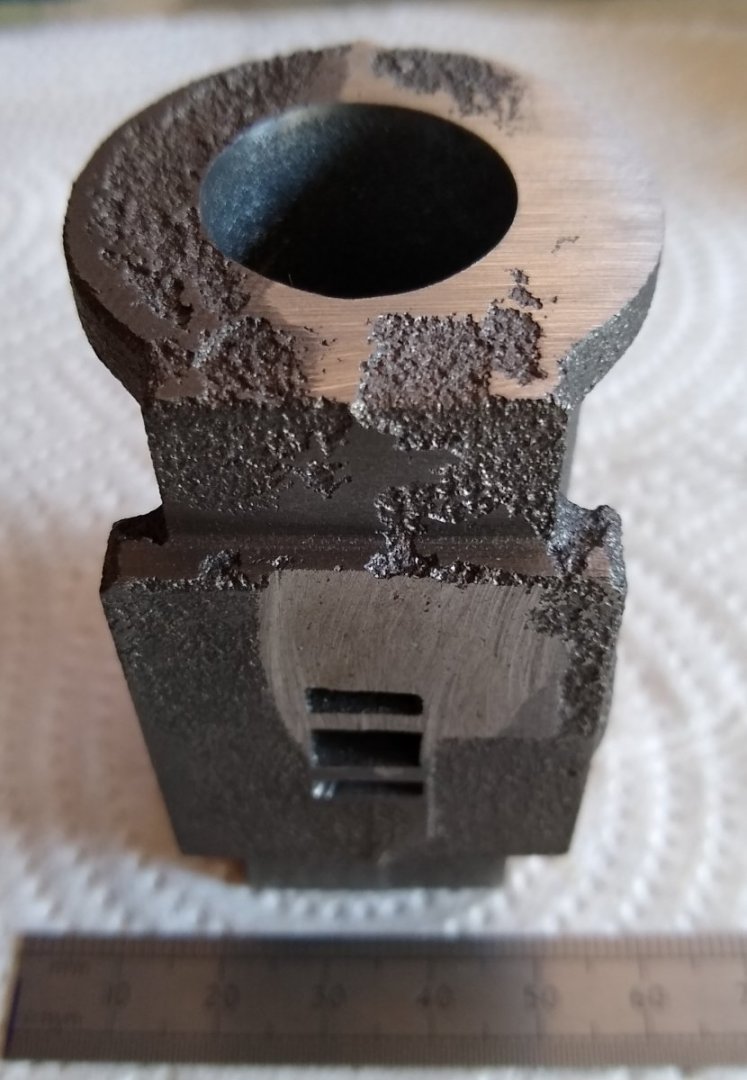
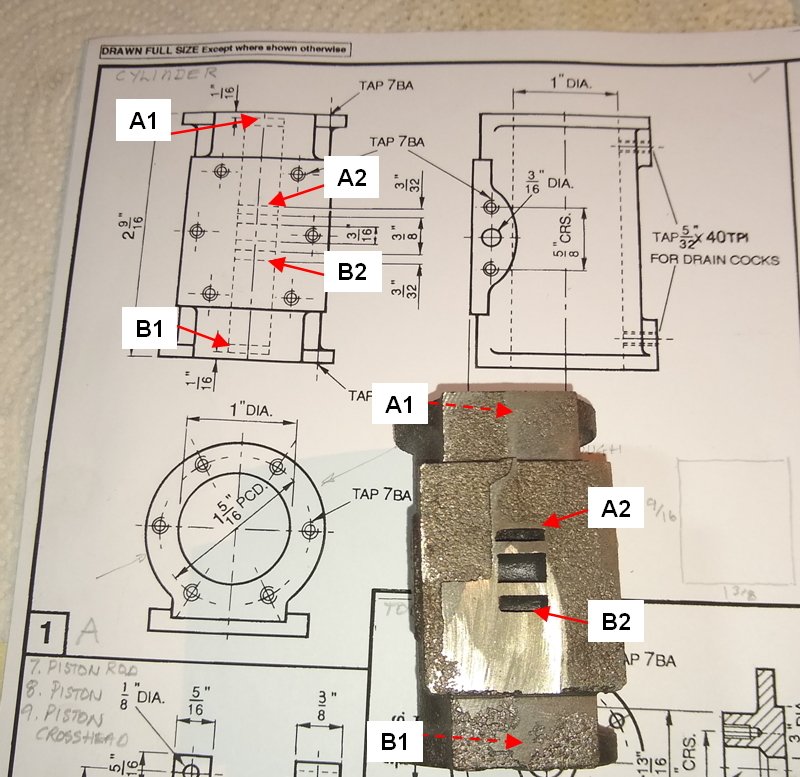

.thumb.jpg.2b2457b3812aa2b2f876e5814d7ecda3.jpg)
